Insects
The class Insecta is incredibly diverse, including more than a million known species, which probably only represents a small fraction of the total species. In fact, the number of described insect species outnumbers that of all other animals combined.
Past research has documented over 100 species of insect on the island, although the true number of species is probably several times greater. As most insects are able to fly, they have colonized St. Martin quite successfully.
Insects have colonized every imaginable habitat on St. Martin, from the seaside to the mountaintops. While some are ubiquitous, others may only be encountered in their preferred habitats. The temperature of the island is relatively consistent, allowing for year-round activity, but many species are noticeably more common during the rainier months when vegetation is more lush.
In this section, butterflies and moths (Lepidoptera) are covered in detail. This is possible because their attractiveness has made them perhaps the most studied group of insects. Less popular orders are included in less detail, largely due to a relative lack of available research.
The enormous diversity of insects compared to other animals often makes specific identification difficult or even impossible, but hopefully the photographs included in this section will give the reader some idea of the myriad of fascinating and often beautiful species present on St. Martin.
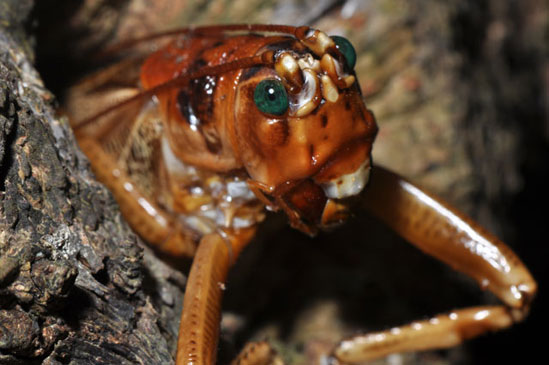
This large katydid (Nesonotus sp.), with its striking and alien appearance, is just one example of the fascinating and peculiar diversity of insect life on the island. This specimen was found hiding in the hollow of a tree in the forest near the top of Pic Paradis.
Lepidoptera
This insect order contains over 180,000 species of butterflies and moths, of which close to 30 species of butterfly and likely over 100 species of moth are present on the island. These insects have a complicated life cycle, from egg to caterpillar to pupa to adult. Caterpillars typically have specific host plants from which many derive toxins to make them distasteful to predators. The lack of mountains high enough to sustain a cloud forest limits the diversity of this order on St. Martin compared to newer, more mountainous islands in the Lesser Antilles.
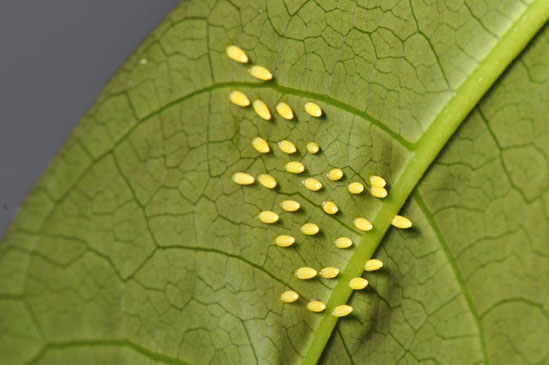
Butterfly and moth eggs are small and inconspicuous. They are typically laid on the leaves of the preferred host plant. Different species may have one, several or many host plants.
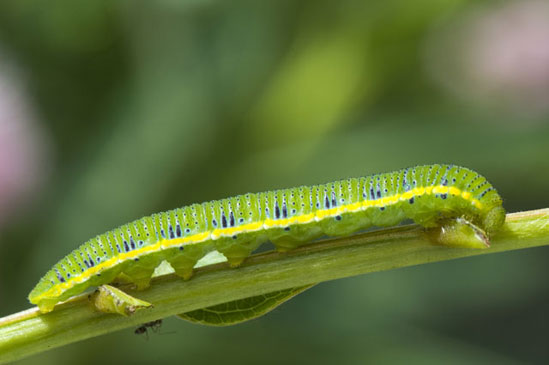
Caterpillars vary widely in appearance, from relatively camouflaged, like this cloudless sulfur, to brightly-colored, warning of inedibility. Some species also change appearance as they grow and molt.
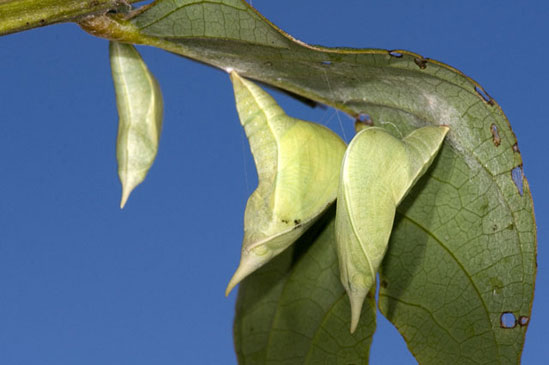
Butterfly chrysalides are typically bare, like these of the cloudless sulfur, while many moths encase their pupae in silken cocoons. If touched gently, they may wiggle.
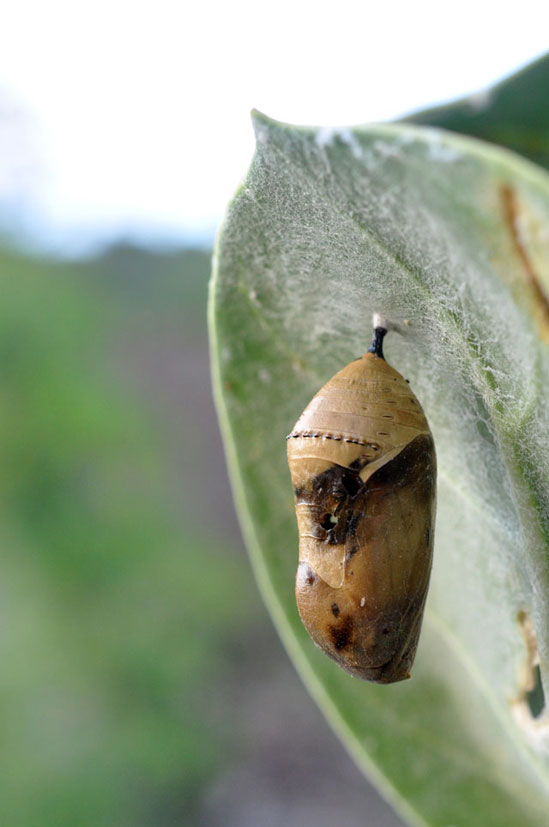
Many butterflies and moths are subject to parasitism, often by ichneumon wasps and tachinid flies, which deposit eggs inside living caterpillars. The larvae feed on the living host animal. This monarch chrysalis was probably parasitized by tachinid flies.
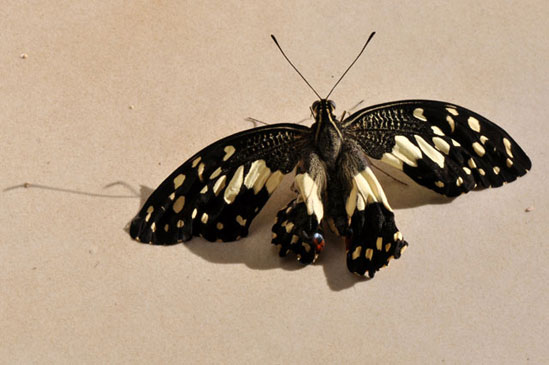
This section is dedicated to our beloved Crêpe, who was maimed during his pupation by a very unpleasant young child who threw his chrysalis on the ground. We miss you!
Butterflies
The abundance of butterflies contributes greatly to the charm and beauty of the island. The few larger species are most obvious, but the many smaller species may in fact be more rewarding to the dedicated lepidopterist.
Close to thirty species of butterfly have been documented on the island, most of which are included here. Most species breed year-round, although many are less common during the relatively dry period of late winter and early spring. While most seem to prefer sunny, open areas, a few species, particularly amongst the skippers, are more common in the forest.
It is likely that the island has lost a few species of butterfly as a result of habitat destruction and spraying to control mosquitoes. Several species that are still present on nearby islands were probably once found on St. Martin. St. Martin has also been colonized by at least one invasive species, the checkered swallowtail. Occasional vagrants from species with no local breeding population may be observed from occasionally as well.
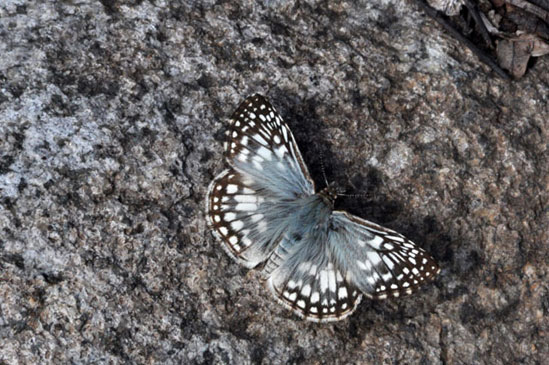
The tropical checkered skipper (Pyrgus oileus), is a diminutive delight found primarily in grassy fields. Along with several other species on the island, it is a spread-winged skipper (subfamily Pyrginae), a group named for their habit of basking with wings spread open.
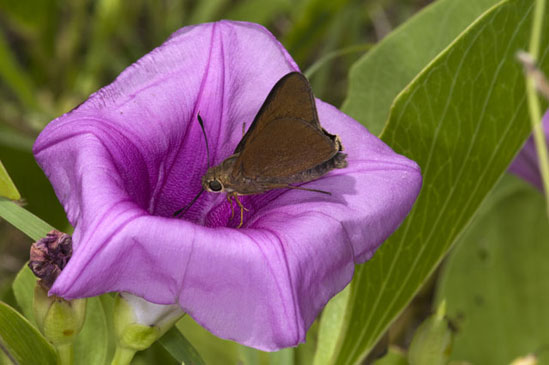
An unidentified skipper, possibly Euphyes sp., sips nectar from a morning glory flower. It is one of several butterfly species I have seen only once or twice on the island.
Monarch (Danaus plexippus)
Multiple subspecies of monarch may be present on the island, the migratory North American (D. p. plexippus) and a non-migratory subspecies found from Florida to the Amazon river (D. p. megalippe). It is also likely that the two subspecies interbreed, making them difficult to distinguish. Caterpillars and chrysalides are most commonly found on the apple of Sodom (Calotropis procera), a dogbane related to milkweed that grows into bushes up to six meters in height. I have also observed them feeding on the Mexican butterfly weed (Asclepias curassavica), a smaller plant from the same family. The photographs on this page depict each stage of this butterfly’s life cycle.
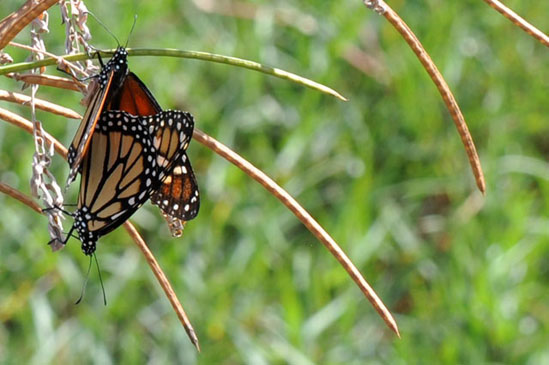
Monarchs begin mating in mid-air, but the process typically takes several hours, most of which they spend perched on trees or plants.
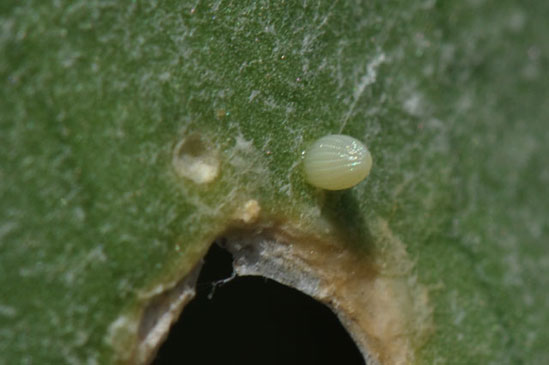
A female monarch repeatedly alighting upon apple of Sodom leaves may be laying eggs, which are deposited singly.
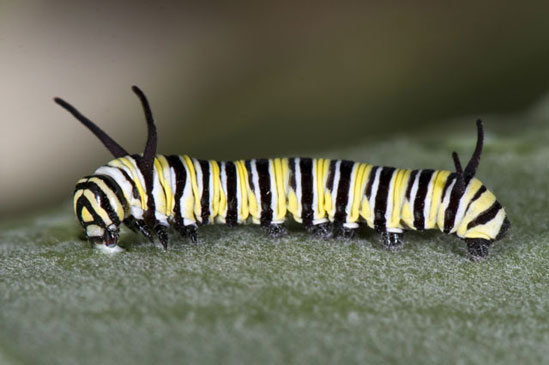
Monarch caterpillars have distinctive yellow, white and black stripes as well as a pair of fleshy tentacles at each end. The poisonous milky sap of the plant makes it distasteful to predators.
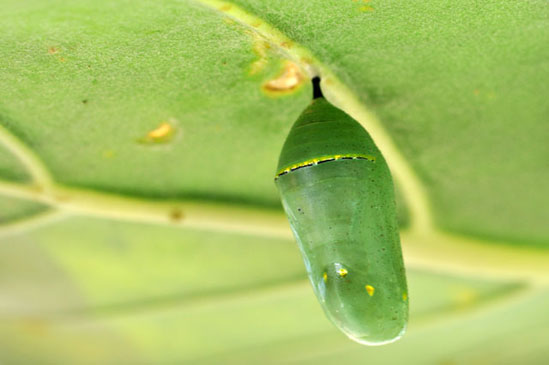
Monarch chrysalides are found on the underside of the leaves of their host plant. Brown chrysalids with small holes in them are found when parasitic wasps have eaten the pupa and emerged.
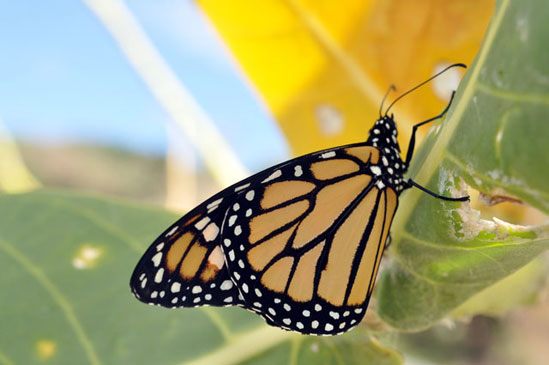
A newly-emerged adult monarch perches on its host plant while its wings harden. This moment is perhaps the best time to get a close-up photograph.
Visitors and Fugitives
There are several species of butterfly that I have seen only once on the island. The black swallowtail (Papilio polyxenes) is not documented as a resident of the Lesser Antilles, but is known to be a strong flyer with a range extending to the Bahamas. However, I have been told that it is very unlikely that it would be able to get here on its own. The mimic (Hypolimnas misippus) comes from Africa, Asia and Australia, but does breed on some islands in the Caribbean. It is possible that it was introduced during the slave trade, or established itself from individuals blown across the ocean from Africa. The individual I encountered does not necessarily indicate they breed on St. Martin.
The Indian leafwing (Kallima paralekta) that I found on St. Martin was surely an escapee from The Butterfly Farm, a small tourist attraction that raises a variety of non-native butterfly species. Considering the farm has been open for fifteen years, I would guess that if any escaped species had become established in the wild they would be more noticeable. Although this is likely a single escapee, it is included here on the chance that it does find a larval food source and begin breeding on the island.
The checkered swallowtail (Papilio demoleus) shown below has typical markings, but is yellow and brown, while normally these butterflies are very close to black and white. Because the coloration resembles other swallowtails in the Americas, perhaps it is a hybrid.
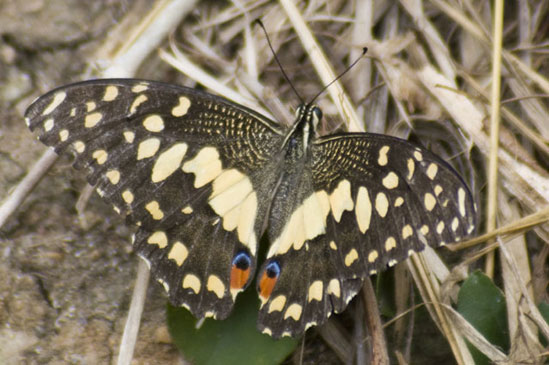
This striking checkered swallowtail (Papilio demoleus) is included here because it has rich yellow markings versus the pale, almost-white markings that are typical (see next page).
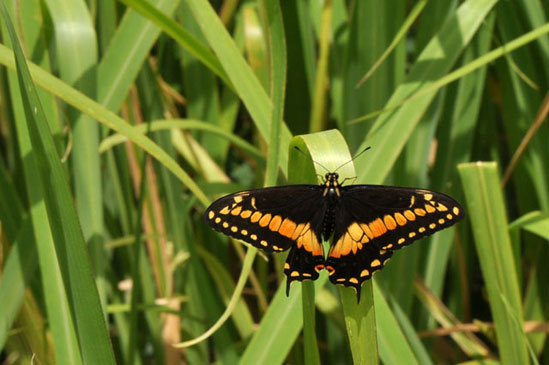
The black swallowtail is found throughout most of North America and northern South America. This individual was seen at the top of Pic Paradis.
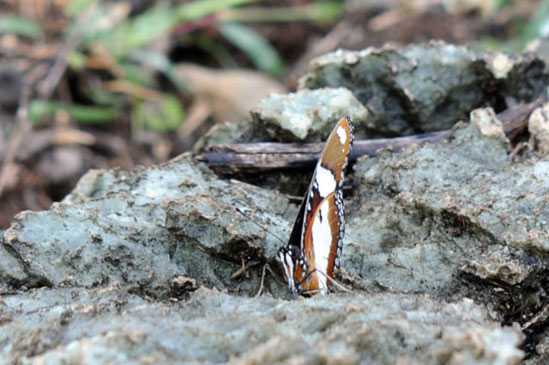
This male mimic was seen near Bell Point on a forested hilltop. It may be a visitor from a neighboring island.
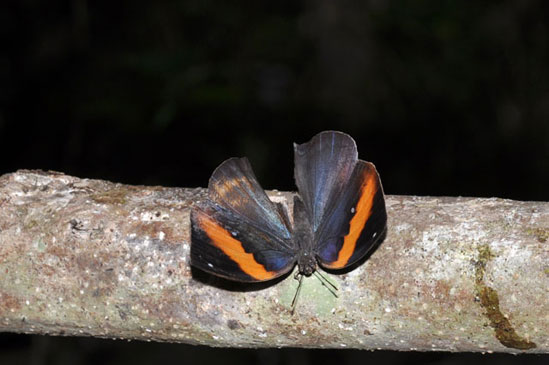
This Indian leafwing was seen in a densely forested area not far from The Butterfly Farm.
Checkered Swallowtail (Papilio demoleus)
Also known as the lime or citrus swallowtail, this Asian species was first documented in the Caribbean in 2004 on Hispaniola. On Saint Martin, it is seasonally quite common, at least in some areas. It is considered a serious pest to citrus farmers, and its impact on the native plants and animals of the island is as yet unknown. I have personally observed the caterpillars eating every single bit of leaf and stem from a tree stump that had sprouted a number of new branches. Eventually, the larger caterpillars pupated, and many of the smaller ones left the stump in search of other edible vegetation. Even then, adults circled the barren stump, interested in depositing more eggs.
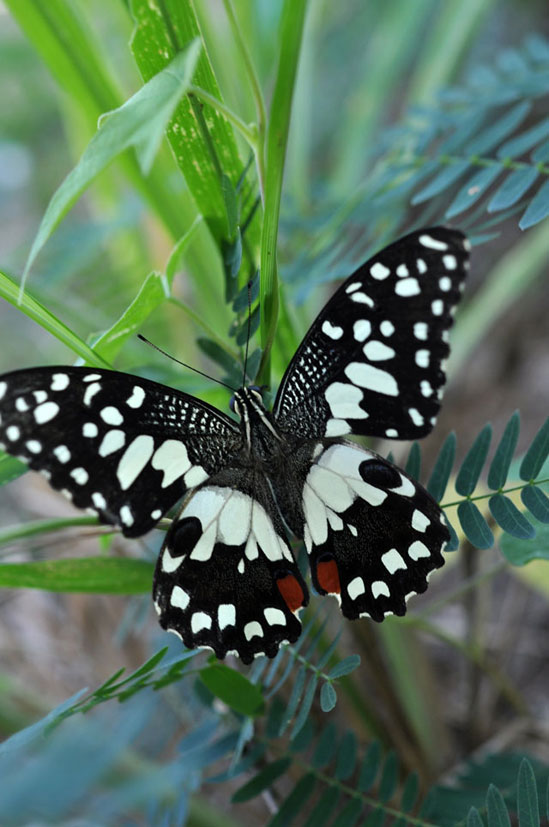
The adult checkered swallowtail is quite beautiful. This recently hatched specimen was just learning to fly, fluttering uneasily and falling to the ground multiple times.
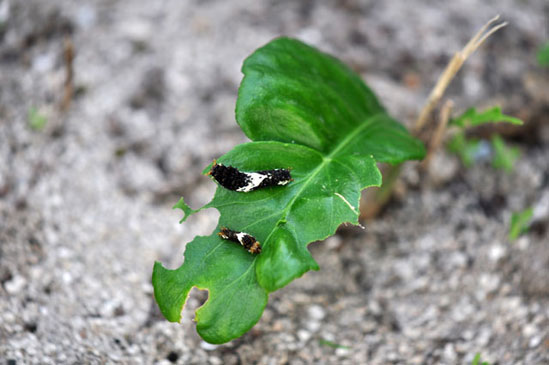
Early instar caterpillars of this species have coloration that resembles bird droppings as a form of protective camouflage. If disturbed they may extrude a pair of tentacles from each end.
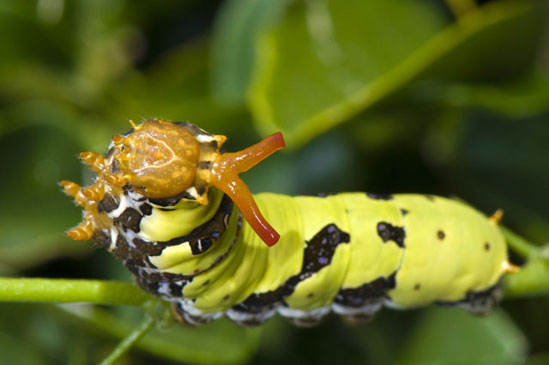
Later instar caterpillars of the checkered swallowtail are green with dark stripes and colorful spots. If threatened, they rear up and extrude two orange-red tentacles.
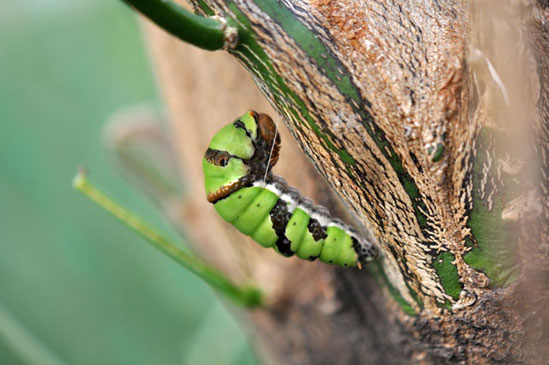
Preparing to pupate, this caterpillar has created a sling of silk to hold itself upright. In the background a small branch has been picked clean.
Tropical Buckeye (Junonia genoveva) and Mangrove Buckeye (Junonio evarete)
These two very similar species of buckeye are found throughout the Caribbean and are relatively common on St. Martin. It is quite difficult or even impossible to distinguish the two species by casual observation. The tropical buckeye has darker, more pronounced spots on the underside of the hindwing and a broad white patch above the large spot on the upper of the forewing. Aside from these small differences, the pattern and coloration of the two species are basically the same. In fact, historically the two species have often been confused and the common name mangrove buckeye has been used for both species.
The mangrove buckeye is, not surprisingly, common in wetland areas near mangroves, and its caterpillars are known to feed on black mangrove (Avicennia germinans). The tropical buckeye may be seen in any sunny area, and its caterpillars are known to feed on various types of Verbena and Acanthus plants.
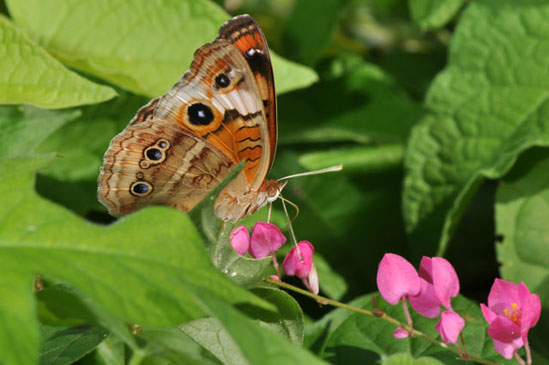
This tropical buckeye is feeding from Mexican creeper (Antigonon leptopus) flowers.
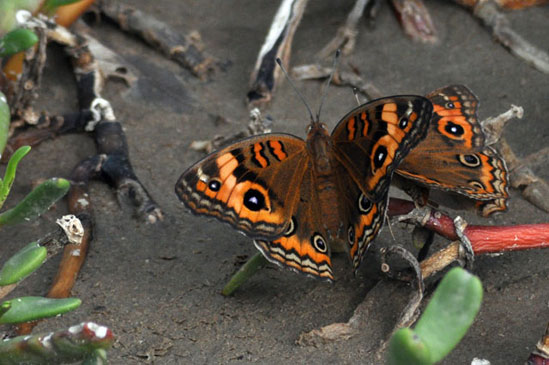
These mangrove buckeyes were seen on a mud flat in wetlands near mangroves. The large white patch on the forewing is clearly absent.
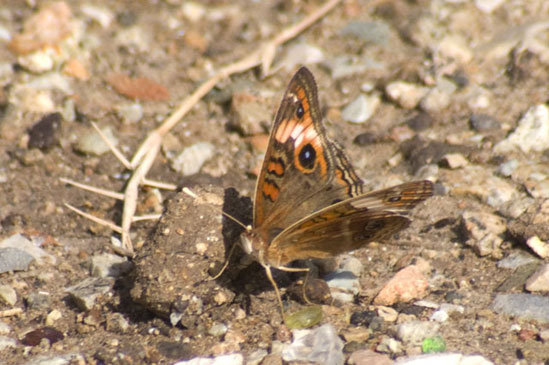
This tropical buckeye has the distinctive white patch just above the large spot on the forewing.
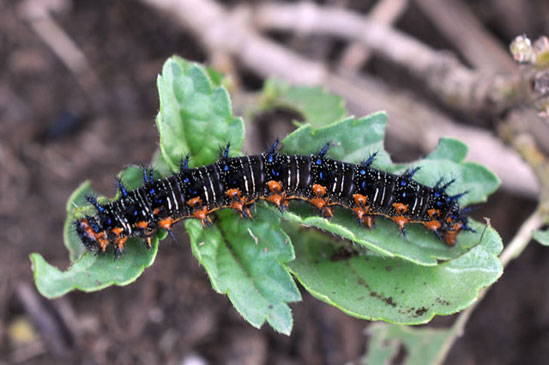
The tropical buckeye caterpillar is black with six rows of hairy bristles which are blue on the back and orange on the sides. Very small yellow or white dots and lines are present as well.
White Peacock (Anartia jatrophae)
The white peacock is similar in pattern to the buckeye species, but markedly different in coloration. To date, I have only seen a handful on the island, which may indicate that the species is quite rare, or that the individuals I observed were vagrants from another island. The multiple sightings were near a salt pond and mangrove area, which is likely their preferred habitat.
There are several subspecies, including a half-dozen in the Caribbean. A. j. jatrophae is the subspecies found in the Lesser Antilles.
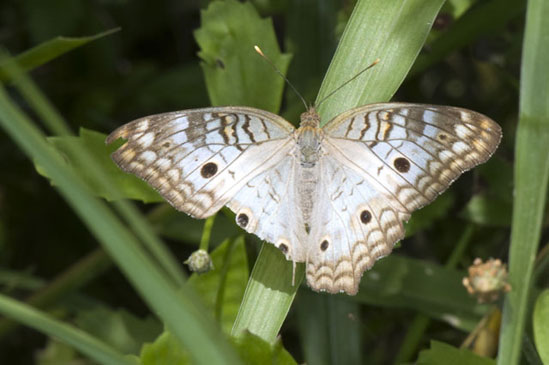
The first specimen encountered was heavily damaged, which could be an indication that it had traveled from another island.
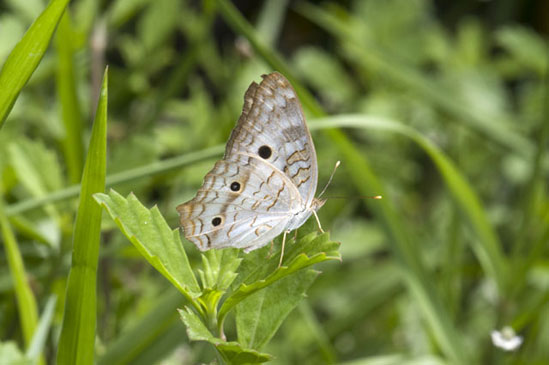
The pattern and general shape of the wings resembles the local buckeye species, although the white peacock has small lobes extending from the hindwings.
Gulf Fritillary (Agraulis vanillae)
This is the only species of heliconian I have seen on St. Martin. With a variety of other species on neighboring islands, it is likely that St. Martin was formerly home to additional species from this subfamily. Perhaps small populations of other species exist here even today.
The gulf fritillary is quite common and easily identified by its medium size and bright orange coloration. The caterpillars are known to feed on passion flower (Passiflora spp.), thus becoming poisonous to predators. The caterpillar is bright orange with several rows of long, black bristles, essentially matching the color scheme of the adult.

The gulf fritillary frequents sunny areas where it feeds on the nectar of various flowers. It is difficult to approach and quick to flit away, although they often circle back.
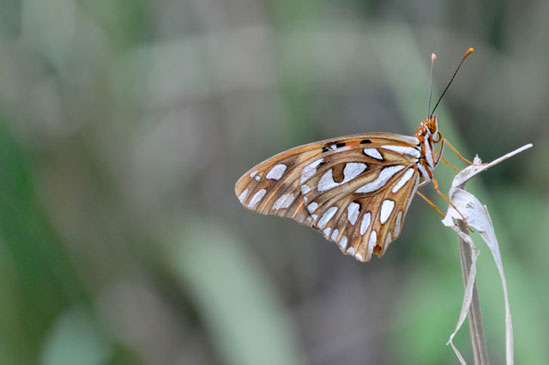
The underside of the gulf fritillary is orange-brown with a pattern of white or silvery blotches.
Great Southern White (Ascia monuste virginia)
This butterfly is the most visible and probably the most common butterfly on the island. The subspecies virginia is found throughout the northern Lesser Antilles. Predominantly white with black markings on the tips of the forewings, the underside of the rear wing and tip of the forewing are yellow in males. The underside of the wings on the female may be mostly white, light yellow, or white with gray patterns. The caterpillar is dark with yellow stripes, black spots and numerous small hairs that are black on top and white on the sides. Not a fussy eater, groups of eggs are laid on a variety of host plants.
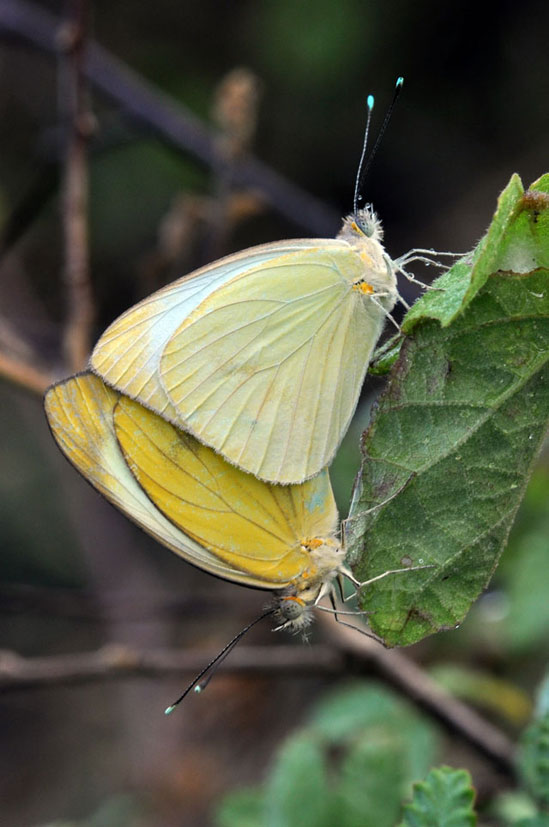
In this mating couple the male is below and the lighter-colored female is above.
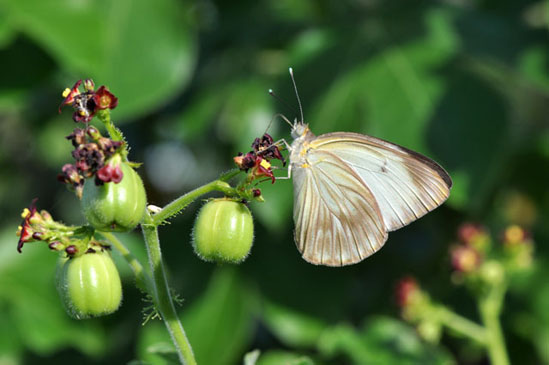
This feeding female exhibits the darker coloration variant. It is suggested that this is tied to the wet season, but this is does not seem consistent on St. Martin.
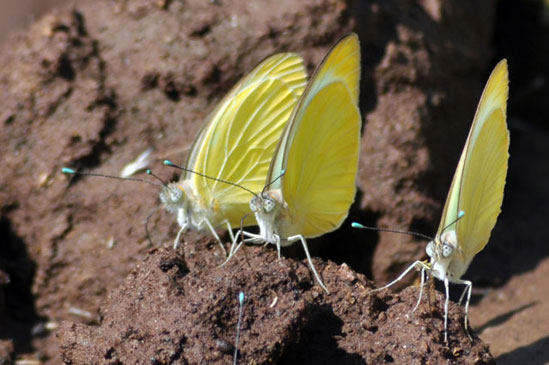
Large groups are often found drinking water from mud or cow dung. If approached, they erupt into a fluttering cloud but quickly regroup and resume drinking.
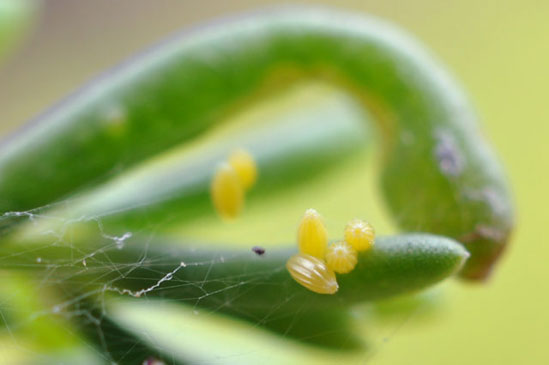
Clusters of elongated yellow eggs are found on a variety of host plants.
Florida White (Appias drusilla)
Easily overlooked amongst the masses of great southern whites, the Florida white is paler and has more angular wings. The male has almost completely white wings with a fine line around the front of the forewing and some light shading on the underside of the wings. The forewings of the female have a small black border, while the underside is very light. In both sexes there is often some yellow at the base of the wings where they meet the body. There are a number of described subspecies, including several in the Caribbean. The population on St. Martin is most likely boydi.
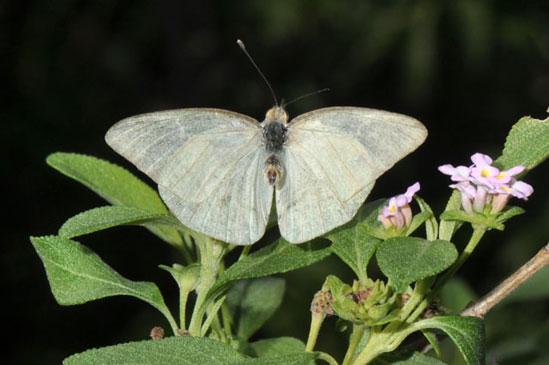
This male is almost completely white, although the thin dark line around the front of the forewing is visible. The angularity of the wings helps to distinguish this species from A. monuste.
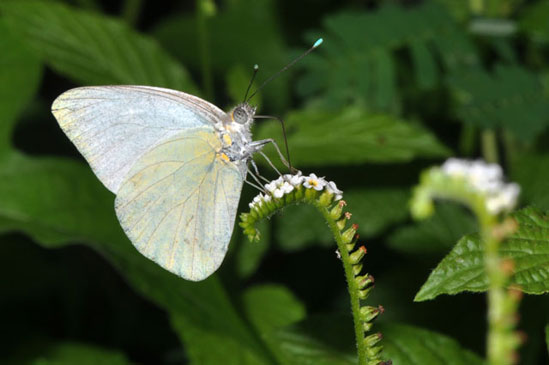
Distinguishing females from A. monuste is even more difficult, but the shape of the wings is still subtly distinctive. The hindwing has a more angular border and the bottom extends to a slight point.
Cloudless Sulfur (Phoebis sennae)
The only large sulfur I have seen on the island, this species is a brilliant yellow and generally a bit larger than the great southern white. Males are almost totally devoid of markings, while females have a smattering of pink and a distinctive pair of white spots ringed with pink on the hind wings. The upper forewings of the female also have a dark border around the front. Chrysalides are light green and sharply angled, and the caterpillars are yellow and ribbed with a pairs of black ribs separated by four yellow ribs.
See page 49 for photos of the caterpillar and chrysalis of this species.
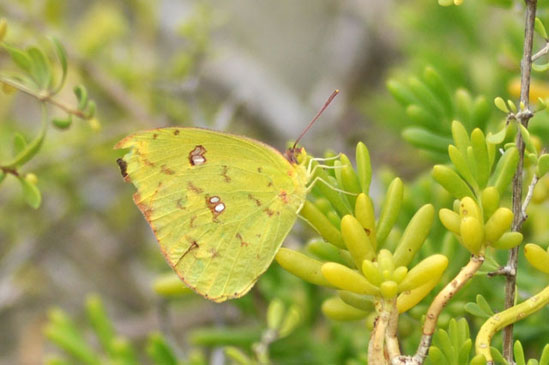
The female cloudless sulfur is not entirely cloudless. In addition to the distinctive pair of spots on the hindwing, a bit of the dark edge of the forewing can be seen in this photo.
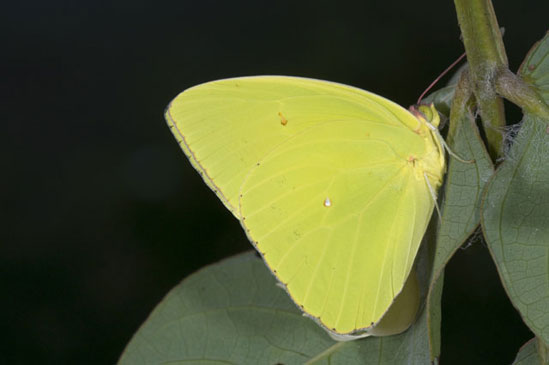
The male cloudless sulfur is almost entirely yellow. This specimen was recently hatched. In the field, this species is difficult to approach, but occasionally it will remain still while feeding.
Hall’s Sulfur (Eurema leuce), False Barred Yellow (Eurema elathea) and Little Yellow (Eurema lisa)
At least three species from the genus Eurema are found on St. Martin. They are all quite small, four centimeters or less in wingspan and are relatively weak flyers that tend to stick close to the ground and are easily swept away in a brisk breeze.
Hall’s sulfur is the largest and the female can be identified by patches of pink and brown at the edge of the underside of each wing. The underside of the male is almost all yellow, and both have a dark border on the front edge of the upper forewing.
The false barred yellow is primarily white. Both sexes have dark borders on the upper side of each wing and the male has yellow forewings with a pronounced black bar at the bottom.
The little yellow has a pink spot on the underside of the hindwing in both sexes, scattered dark spots and zig-zags near the front edge of the hindwing. Each wing underside has a pink and white border with black spots at the end of each vein.
Other species that may also be present are the barred yellow (Eurema daira) which is very similar to elathea, and the little yellowie (Eurema venusta), which is similar to leuce.
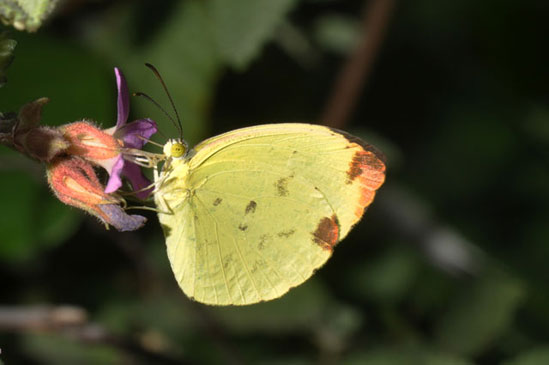
Hall’s sulfur has distinctive markings on the tips of each wing. It is also noticeably larger than the other small sulfurs and is more likely to feed on the flowers of shrubs rather than undergrowth.
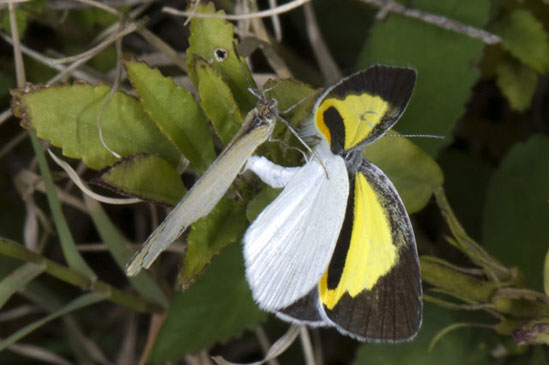
The identifying characteristics on the upper side of the wings are rarely visible when the false barred yellow is feeding (below), but can be seen in flight or with a lucky gust of wind.
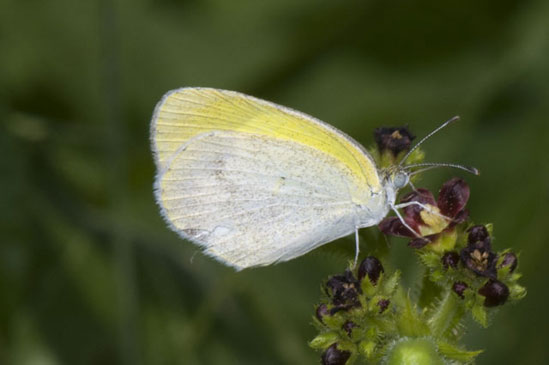
The false barred yellow feeding with wings closed can be identified by its yellow forewing and white hindwing.
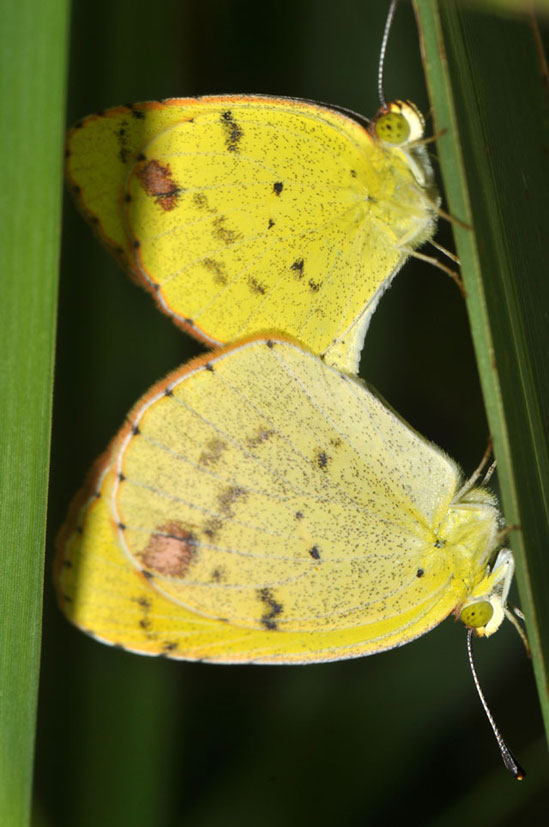
A mating pair of little yellows has chosen an inconspicuous spot amidst the grass. I believe the slightly darker butterfly on top is the male, but in this species have very similar coloration.
Cassius Blue (Leptotes cassius), Hanno Blue (Hemiargus hanno) and Miami Blue (Cyclargus thomasi)
Often only two centimeters in wingspan, these three blues, along with the similarly-sized hairstreaks, are the smallest butterflies on the island. They tend to fly low, rarely above waist height, and may frequently be seen feeding from small flowers. In the male, the upperside of each species is predominantly blue. Females have blue close to the body, but may also have light patches and a dark border around the wings.
The underside of the cassius blue is white with a gray-brown pattern of spots and bars with two pronounced eyespots at the rear of the hindwing. The subspecies here is probably cassioides, which is found in the Caribbean.
The underside of the hanno blue is predominantly gray, with one eyespot on the hindwing and two small black spots near the leading edge of the hindwing. The local subspecies is probably watsoni.
The Miami blue has two large eyespots and is essentially gray with white patches on its underside. There are several black spots on the hindwing, including two large ones near the leading edge. The local subspecies is likely to be woodruffi. The name Miami blue may also be used in reference to the critically endangered subspecies bethunebakeri, which is found only in Florida.
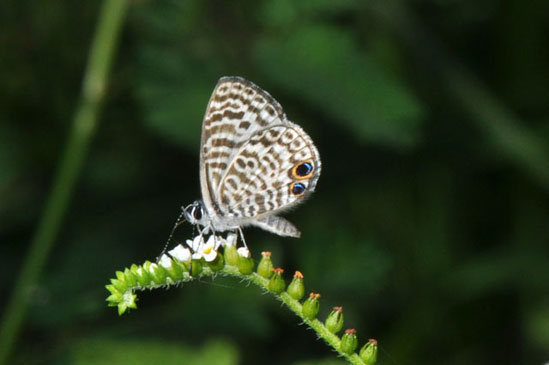
The cassius blue has a range that extends from the southern United States to parts of South America. It is also called the tropical striped blue.
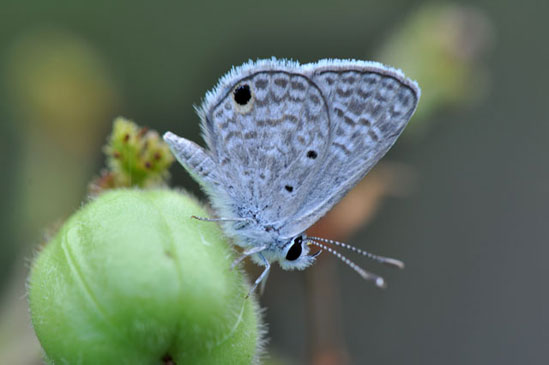
The hanno blue has a smaller range, primarily Central America, the Caribbean and a few northern parts of South America.
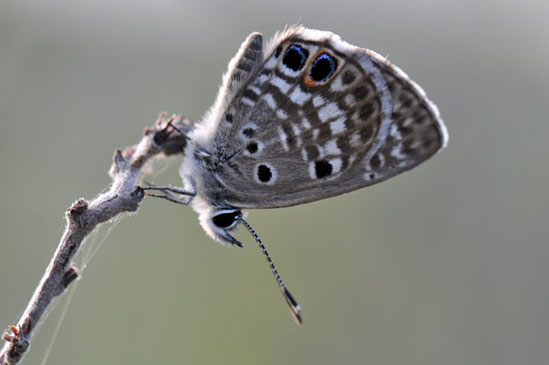
Once common in Florida, the Miami blue was thought to be extinct there in 1992. A group estimated at less than fifty individuals was found 1999. Additional colonies were found in 2006.
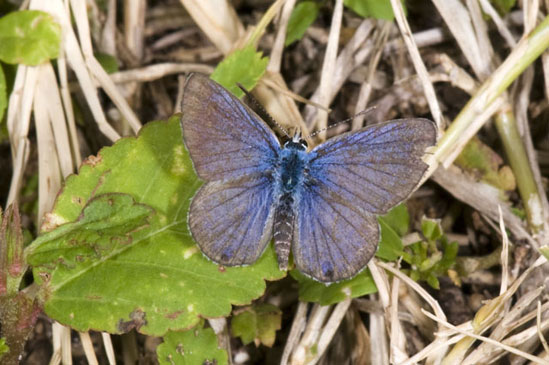
The males of all three species of blue tend to be primarily blue on the upperside of the wings. This specimen is a hanno blue, identified by photos showing the underside of the wings.
Angerona Hairstreak (Electrostrymon angerona), Disjunct Scrub Hairstreak (Strymon bubastus ponce) and Columella Scrub Hairstreak (Strymon columella)
St. Martin is home to at least three species of hairstreak. Belonging to family Lycaenidae with the blues on the previous page, they are similar in size and habit and quite difficult to identify in flight.
The angerona hairstreak has tan wing undersides with a thin white and black stripe going down both wings and long tails.
The disjunct scrub hairstreak has no tails and is actually quite similar to the hanno blue, but more tan in color and with a pronounced orange shading on many of the spots.
The columella scrub hairstreak has two patches of orange and red on the hindwings near the its tails. It is sometimes called Hewitson’s hairstreak.
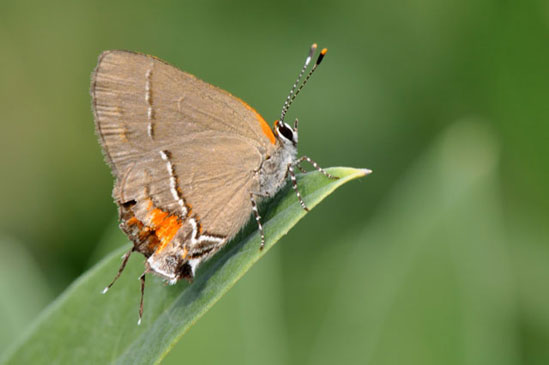
The angerona hairstreak can be identified by the thin black and white line running down its wings.
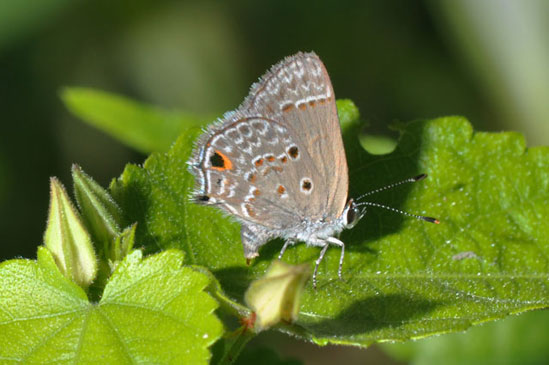
This disjunct scrub hairstreak appears to be laying eggs.
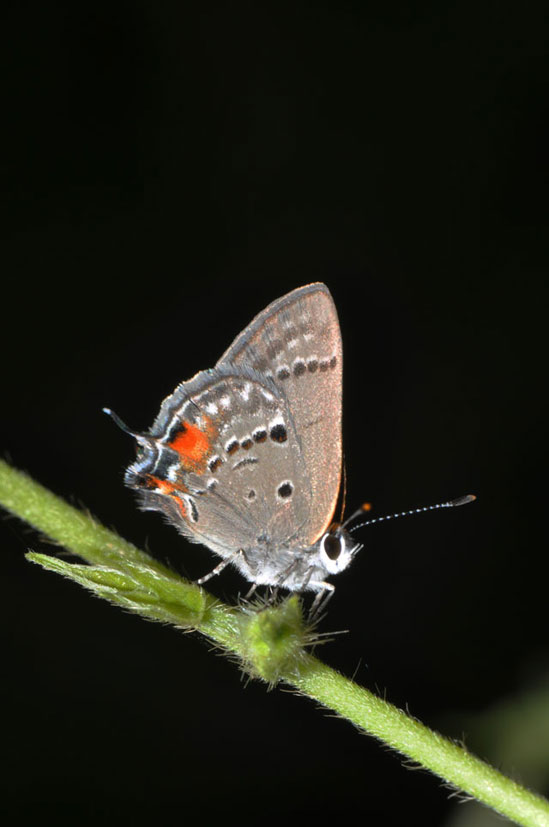
The columella scrub hairstreak has generous splashes of orange and red near its tail.
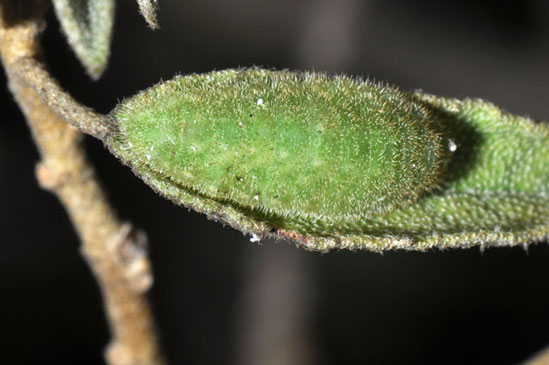
Hairstreak caterpillars are often oval-shaped, with the head only visible from the underside. They are known to feed on various plants in the mallow family, including hibiscus.
Skippers (Hesperiidae)
There are several thousand species of skipper, including at least six on St. Martin. Identification can be quite difficult. In fact, many species can only be distinguished through dissection and microscopic evaluation of the genitalia. I have not done this. I do believe, however, that the identifications made here are likely to be correct, or at least pretty close. I believe there are also at least two resident species I have not yet identified.
With their thick bodies, hooked antennae and large eyes, these butterflies often resemble moths and are, in fact, typically classified in a separate superfamily from the rest of the butterflies.
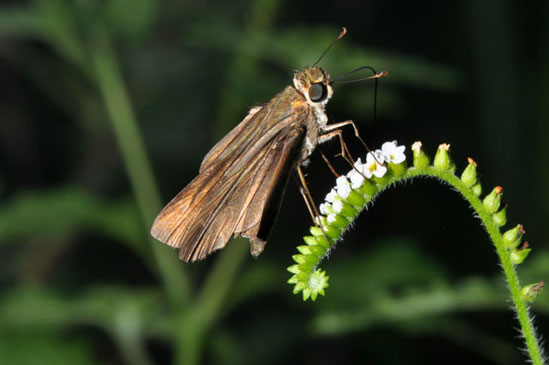
An unidentified grass skipper (subfamily Hesperiinae) seen feeding. With over 2,000 known species, the grass skippers are the largest skipper subfamily.
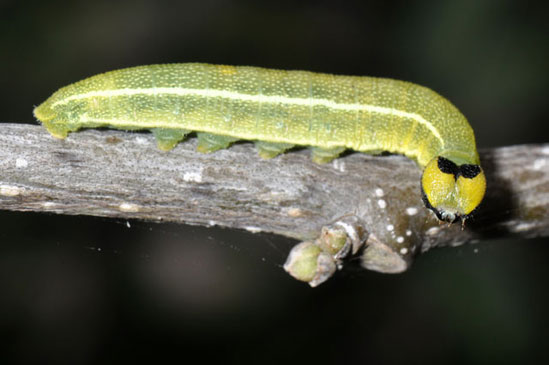
Skipper caterpillars typically have a large, round head, often black or yellow.
Tropical Checkered Skipper (Pyrgus oileus)
This small skipper, less than four centimeters in wingspan, is quite common on the island and can be seen feeding in sunny areas. Gray-brown with white markings that form irregular bands, they are often perched with wings spread, either to capture sunlight for energy or, if male, to attract females. The species ranges from the southern United States to Argentina. Like many skippers, the body and inner portion of the wings are furry, with gray-blue hairs on this species.
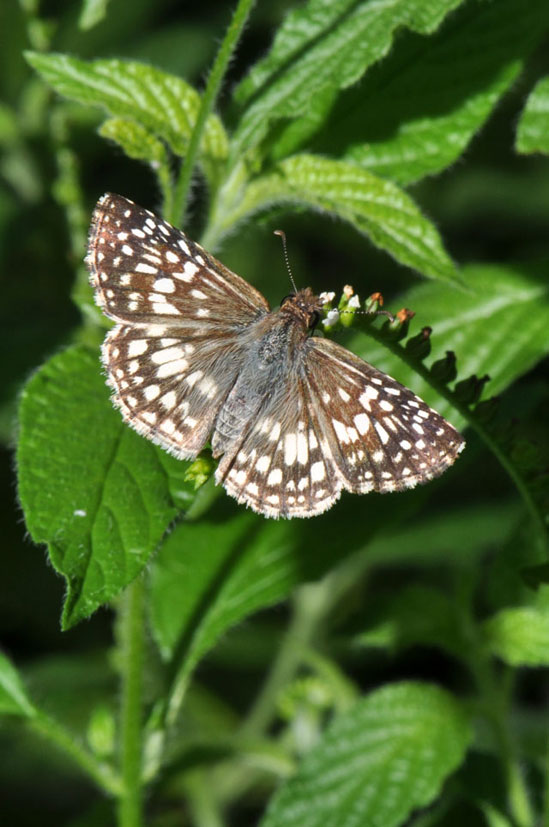
This individual has assumed a typical pose while feeding from small flowers in a sunlit clearing in the forest.
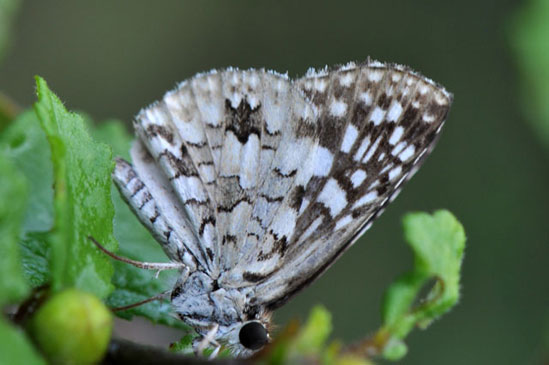
The underside of the tropical checkered skipper is similar to the upper surface, although the rear wing is white with irregular, gray bars with black outlines.
Long-tailed Skipper (Urbanus proteus)
This skipper has a wingspan of up to six centimeters, and is the largest skipper on the island. It is easily identified by the brilliant blue-green coloration on the body and inner wings and its long tails. Although there are several other tailed species in the Caribbean, they do not have the iridescent blue-green.
This skipper seems to prefer border zones between forested and open areas and is often found feeding in meadows and perching on nearby trees.
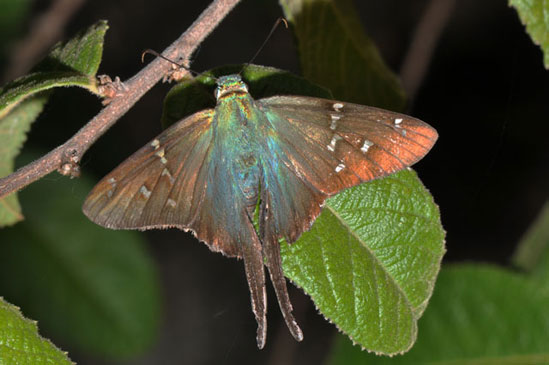
Iridescent blue-green coloration in the furry area of the body and inner wings distinguishes this species from other long-tailed skippers.
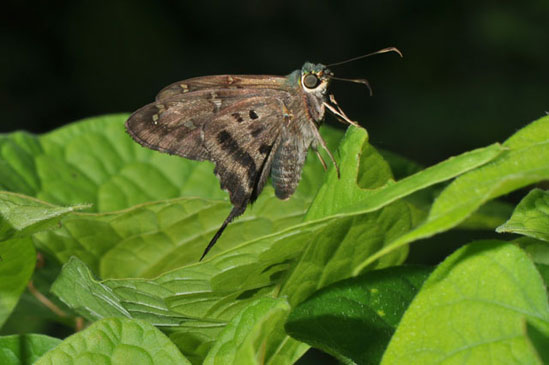
The long tails help to distinguish this skipper from the hammock skipper, which has similar coloration and patterning.
Hammock Skipper (Polygonus leo)
This skipper is similar in habit to the long-tailed skipper. It does not have tails, but does have noticeable lobes on the rear wings. The underside of the rear wing has a single black spot, and both wings tend to have a purplish sheen.
This fast-flyer often rests on the underside of leaves and also seems most common on the edge between forested and open areas, or near clearings and trails.
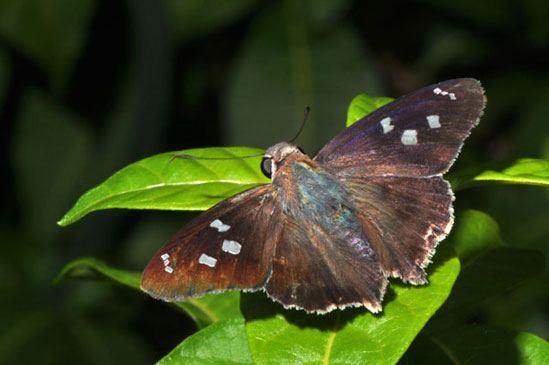
The hammock skipper has less intense, but still noticeable, blue-green on the body and a set of three large and three small white spots on the forewing.
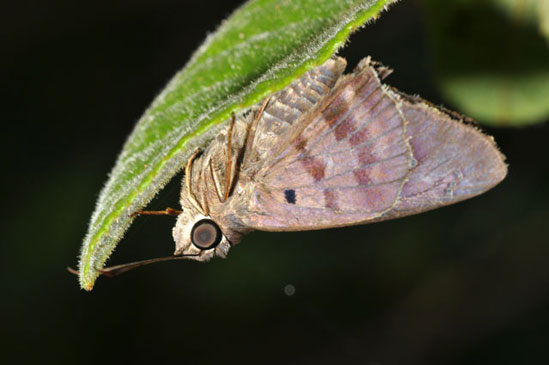
The single black spot and purple sheen on the underside of the wings help distinguish the hammock skipper from a number of other similar species.
Caribbean Duskywing (Ephyriades arcas)
These skippers seem to prefer forested areas, and can be seen on narrow trails as well. The upperside of the male is black with a purple or dark blue sheen, while the underside is typically brown. Generally there are no markings on either side. Females are brown and somewhat similar to the hammock skipper, but darker and with no green patch. They have similar white spots near the forewing tips, but near the three large spots, there is a fourth smaller one and instead of a line of three small spots, there are six.
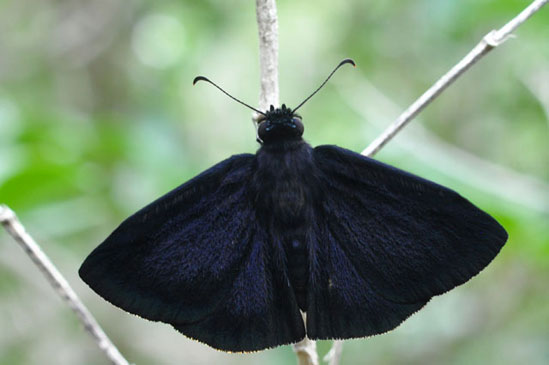
The male is essentially solid black, but flashes iridescent purple when sunlight hits at the right angle.
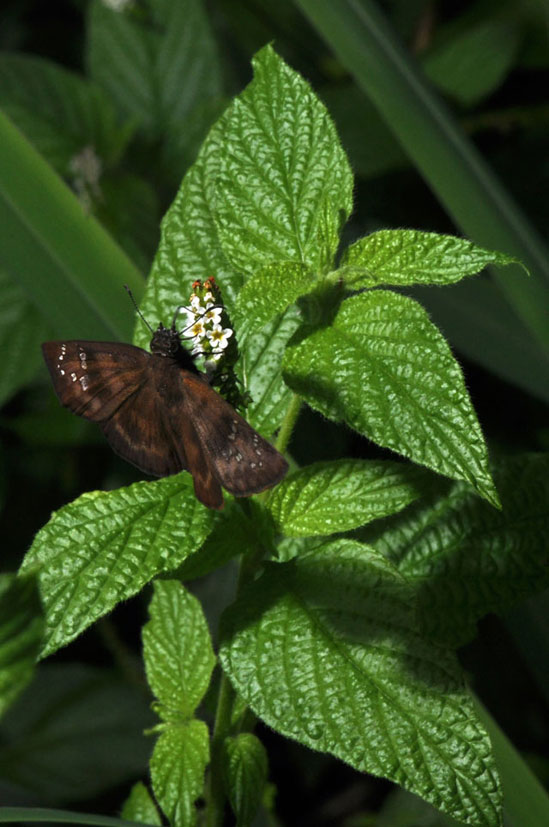
The female is similar to the hammock skipper, but has a different pattern of white spots on its forewing tips. It also lacks the lobes that are present on the rear wings of the hammock skipper.
Vitellius Skipper (Choranthus vitellius)
There are a number of similar species in this genus, of which vitellius is the best match both in appearance and in geography. With a number of species and subspecies defined that are endemic to specific islands, including two new species discovered on Hispaniola in 1983, it is likely that the taxonomy of these skippers is subject to change.
These skippers are found primarily in sunny areas, but I have also seen them resting near lights at night. They are part of a subfamily known as grass skippers which contains over 2,000 species.
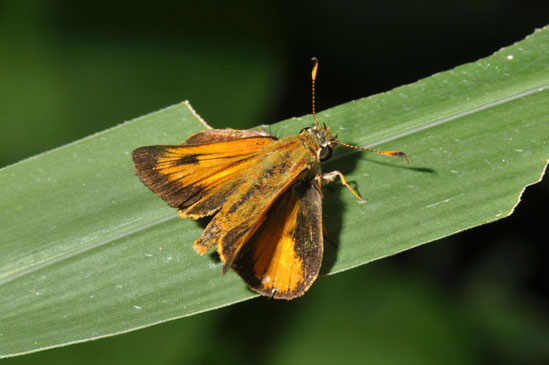
The key distinguishing mark on this skipper is the vaguely v-shaped mark on the forewing.
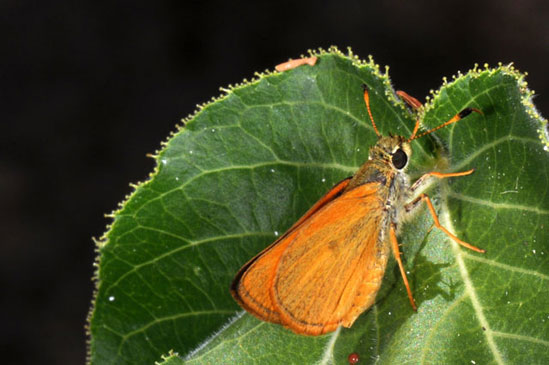
With its wings folded together, this skipper is difficult to identify. The thin black line near the edge of the wing is the only significant characteristic.
Moths
I would guess there are well over 100 species of moth on the island. There are thousands of species in the Caribbean and I have seen more than 50 without even attempting to do a comprehensive investigation. Scientific research on the topic is far from complete.
There are a handful of diurnal moths that may be seen while exploring the island, but the majority are nocturnal. Although they may easily be overlooked, the moths of the island are tremendously varied and often quite interesting.
In this section there are detailed accounts of a few of the more noticeable species followed by photographs of some representative types, identified as closely as possible.
Tetrio sphinx (Pseudosphinx tetrio) and other sphingidae
This large sphingid is perhaps most noticeable during the larval stage. Huge, brightly-colored caterpillars may be seen completely stripping frangipani bushes of their leaves (typically just before the plants shed them to conserve water during the dry season). The large pupae are typically found in the dirt below host plants.
The adult sphinx moths are stout, fast-flying moths and are often quite large. A number of species are present on the island. Unlike most moths, many species are diurnal nectar-feeders. In flight or while hovering to feed from flowers they may be mistaken for hummingbirds.
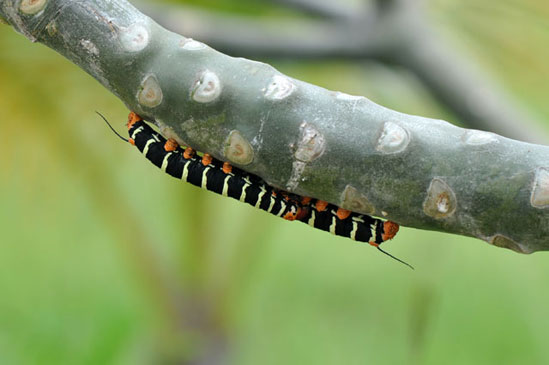
Tetrio sphinx caterpillars feed on frangipani, which grows both wild and in gardens. They reach over fifteen cm in length and often completely denude their host plant.
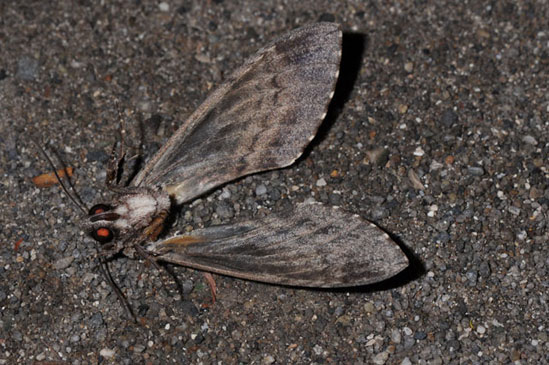
This specimen (probably P. tetrio) was partially eaten and had no abdomen. Perhaps due to their large size, they are more than a meal for the typical island insectivore.
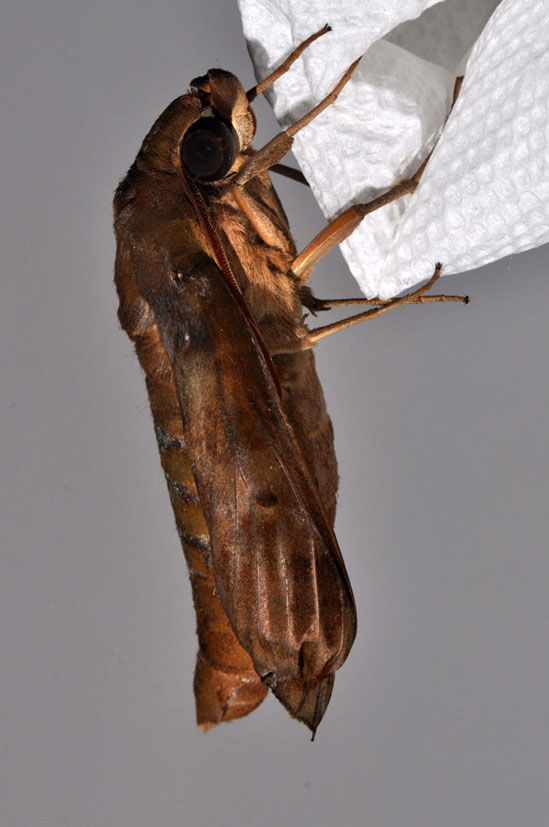
This newly-hatched sphinx is probably Pachylia ficus, one of the larger species on the island.
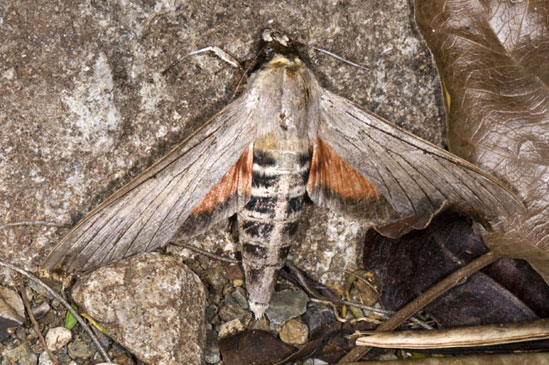
Several species of sphinx, like this Erinnyis ello, have brightly-colored hindwings.
Black Witch (Ascalapha odorata)
This moth is a harbinger of death in some Caribbean folklore, and is also the largest moth on the island by wing size at up to sixteen cm in wingspan. This nocturnal moth spends its days hiding on rocks or trees in shady areas. It is particularly common in the dry gullies that run down the forested mountains, and will take flight briefly when passed closely. Due to its size and coloration it is easy to briefly mistake it for a bat, and in fact, it is often called a bat by locals. With their excellent camouflage and reclusive habits, they are difficult to find, approach and photograph.
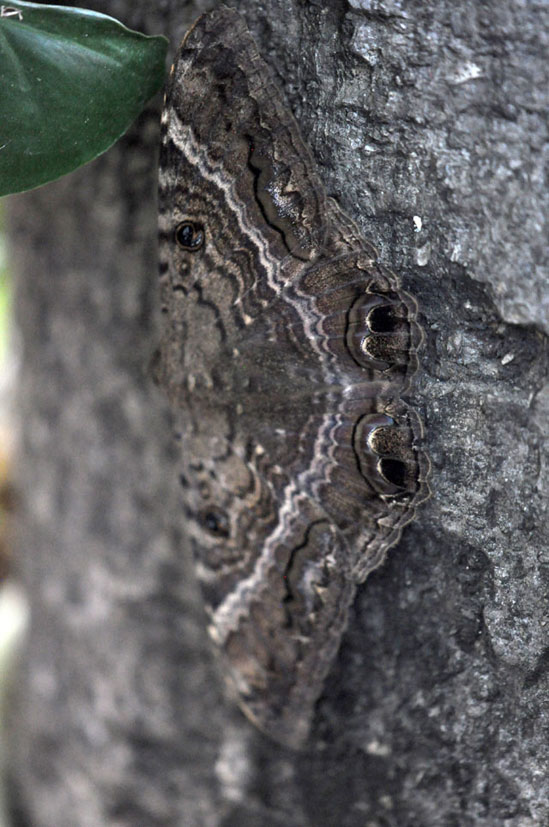
Although it is difficult to see in this photo, the eyespot on the inner forewing is in the shape of a 9 or a large comma (backwards on the right wing).
Spotted Oleander Caterpillar Moth (Empyreuma affinis)
Although this moth is native to the Caribbean, it is a relatively recent introduction to St. Martin, first noticed locally in the 1980s, around the same time as introductions were documented on other Caribbean islands and in Florida. The widespread planting of its larval host plant, oleander (Nerium oleander), in gardens and on roadsides undoubtedly contributes to its success on the island.
This stocky moth is often seen flying clumsily during the day and the bright orange caterpillars are easy to find on oleander bushes.
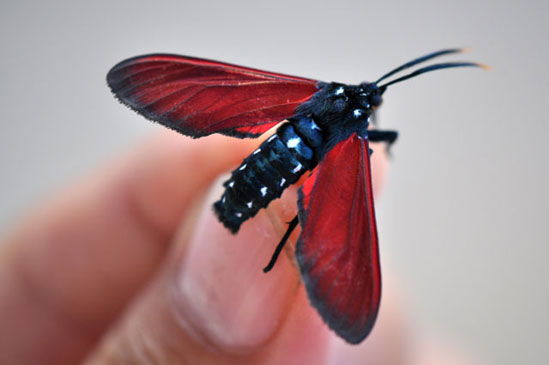
The adult is not particularly moth-like in flight and casual observers often mistake it for a beetle or bee.
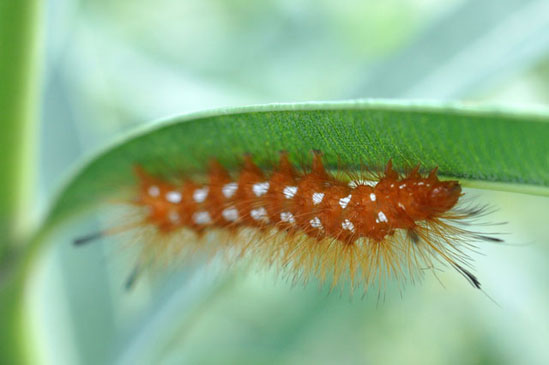
Caterpillars are quite common, and noticeable, on oleander bushes. Despite their abundance, only in extreme cases do they defoliate the entire host plant.
Ornate Moth (Utetheisa ornatrix)
Also called the bella moth, this species may be seen in grassy areas during the day, making short flights when disturbed. In flight, it appears white, but it has a black and red design around the forewing, and a black border surrounding white or pink on the hindwing.
Highly variable in appearance, variations were considered to be two species until a recent consolidation under ornatrix. On the island, the inner portion of the forewing may be almost entirely white, or may have red markings and black spots.

Startled adults briefly take flight, but once they find a suitable perch it is often possible to approach them quite closely.
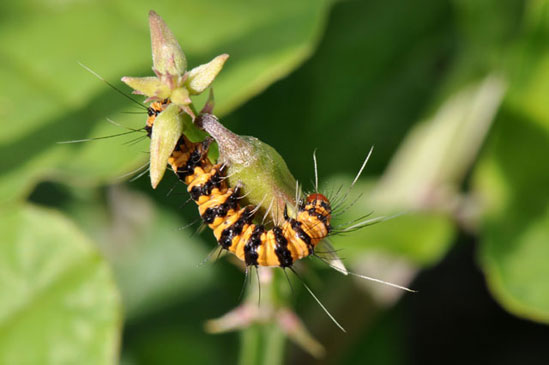
Larvae feed on rattlepod (Crotalaria spp.), preferring the unripe seeds, which they eat from within the seed pods. Toxic alkaloids concentrated in the seeds make the caterpillars inedible.
Hieroglyphic Moth (Diphthera festiva)
This moth may be seen at rest during the day on leaves, trees or walls. While not uncommon, they are not particularly visible, considering their caterpillars feed on a variety of plants that are quite plentiful on the island.
The caterpillar of this species is white with an irregular grid of black lines. The head, rear and prolegs (the fleshy leg-like structures on the abdomen) are bright red. They feed on a variety of shrubs in the mallow family (Malvaceae).
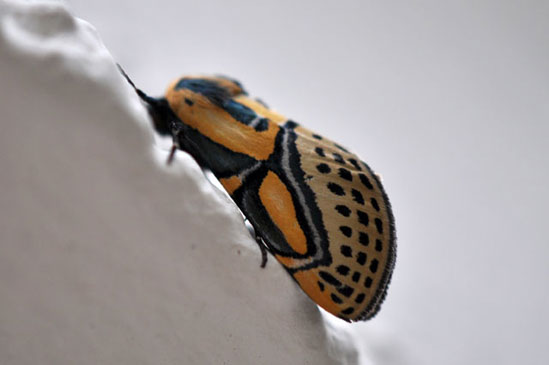
The hieroglyphic moth is brightly colored, with intricate patterns of orange, yellow, blue and black.
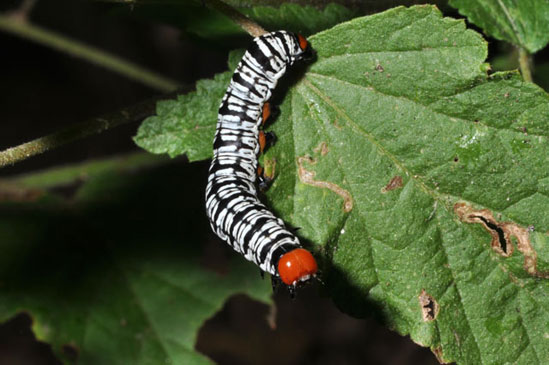
Caterpillars are quite large, and many of them may be seen feeding near each other on the same host plant.
Additional moths
The following pages contain a sampling of the many varied moths that are found on St. Martin. Identification and additional information are provided when possible. I regret that I am only able to include such a small percentage of the total diversity in this book. The majority of moths on these pages were attracted to the light on our veranda in Grand Case.
The last page of this section is devoted to some commonly seen moth caterpillars.
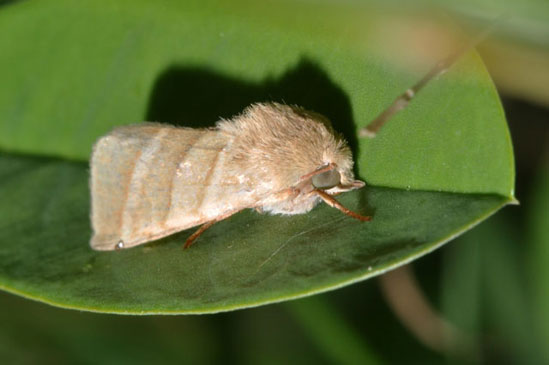
The tobacco budworm, Heliothis virescens, is considered a major pest in many areas. The caterpillars feed on tobacco, cotton and soybean plants.
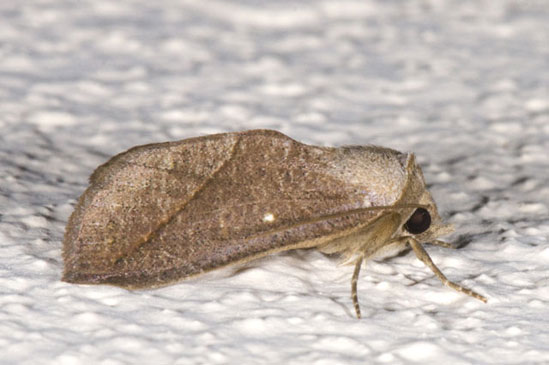
Phyprosopus tristriga is a noctuid that is endemic to the Antilles.
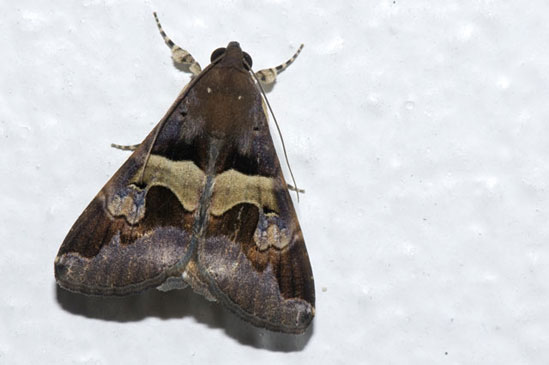
Melipotis januaris is fairly large, quite common and attracted to lights at night. The male is pictured, the female is similar, but slightly more drab.
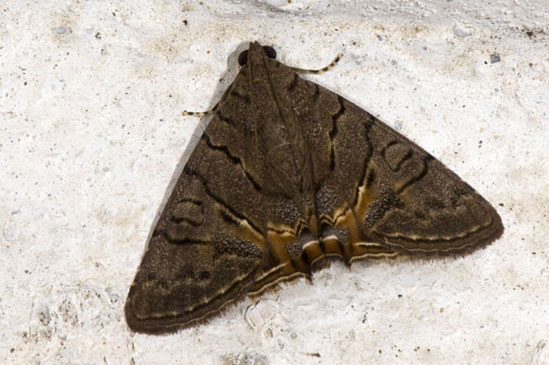
This noctuid (Dyomyx sp.) may be Dyomyx jugator, a species endemic to the Lesser Antilles, and is quite common on the island.
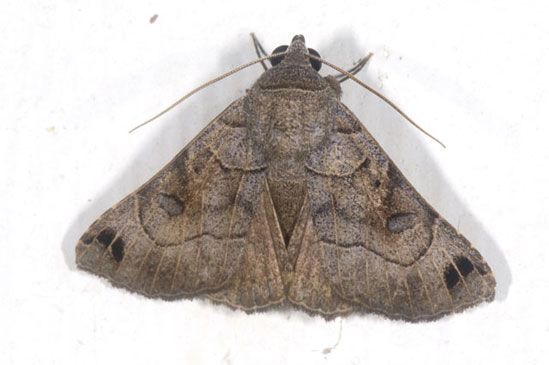
Isogona scindens is a noctuid found from the southern United States, through the Caribbean and northern South America.
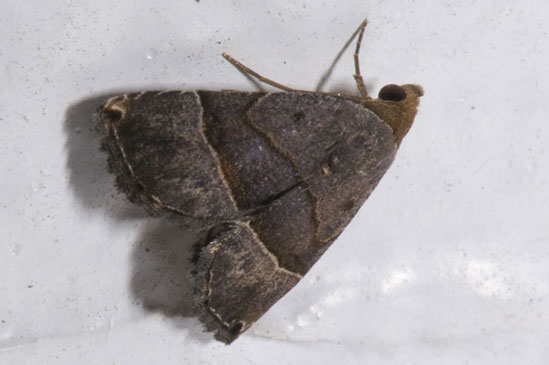
The omatochila moth (Ommatochila mundula) is a small noctuid that ranges from the southern parts of the US to Central America and the Caribbean.
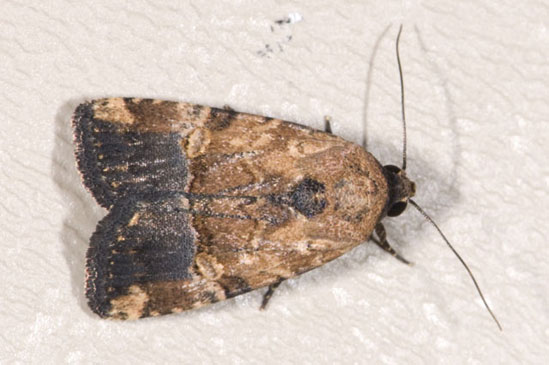
This noctuid is probably Elaphria agrotina, but variations in the color of this species make precise identification difficult.
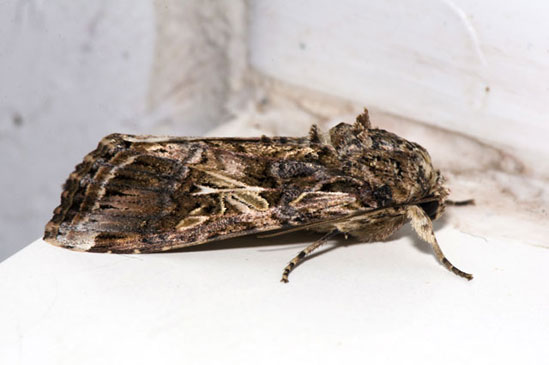
Spodoptera latifascia has many common names. My favorite is velvet armyworm. This large Noctuid is quite common on the island, as is its caterpillar.
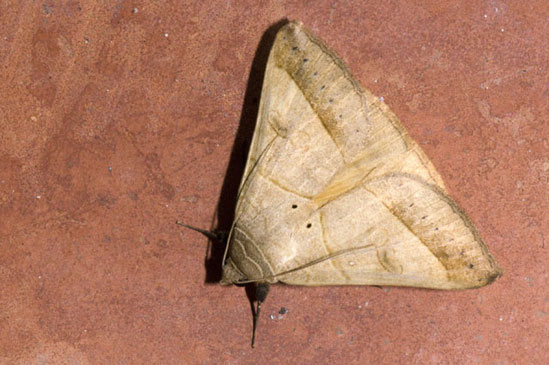
The striped grass looper (Mocis repanda) is found in Central America and the Caribbean. Its grass-eating caterpillars are considered a pest to corn and sugar cane.

This brown leaf mimic (Metallata absumens) was found on leaf litter in the forest on Pic Paradis. To complete the illusion of being a leaf, when approached it flutters quickly only a foot or two away like a leaf blown in the wind.
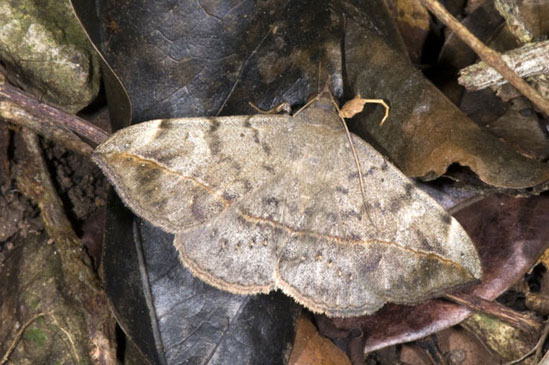
Another variation on the leaf mimic, the velvetbean moth (Anticarsia gemmatalis) was also found on the forest floor on Pic Paradis. The caterpillar of this moth is a pest of several bean crops.
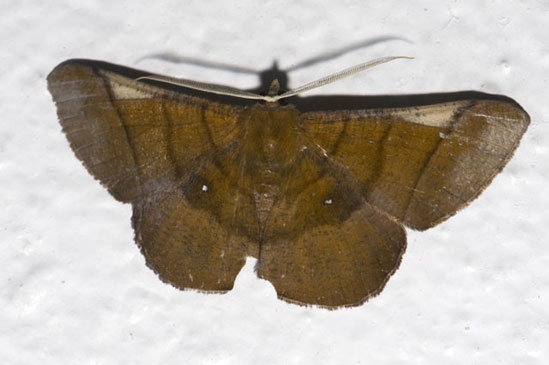
Sphacelodes vulneraria, known as the looper moth, is a medium-sized Geometrid. A general lack of research concerning the moths of the Caribbean makes identification difficult at times, but also represents an opportunity for discovery.
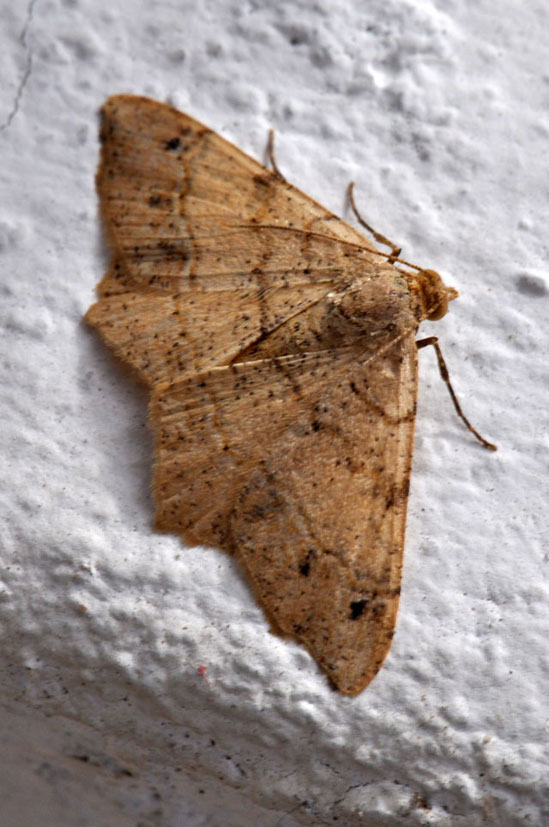
Semiothisa everiata is quite variable in color, although the basic pattern remains the same. In some cases the outermost band of the wings is darker than in this individual.
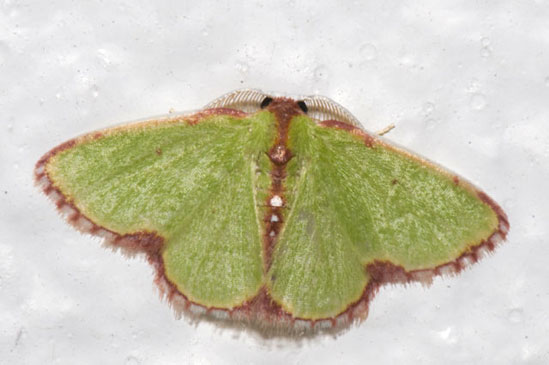
Synchlora cupedinaria is small, but beautifully colored in green and pink. There are multiple subspecies in the Caribbean.
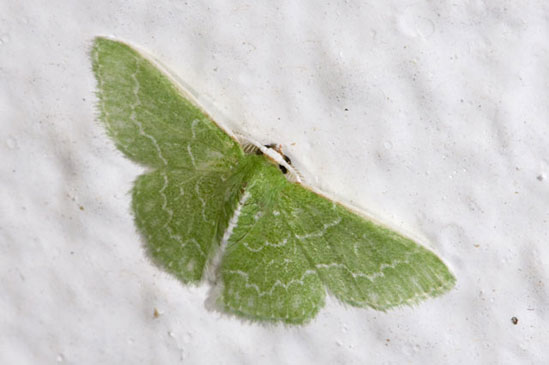
The southern emerald moth (Synchlora frondaria) can be distinguished from similar moths by the white line running down its abdomen.
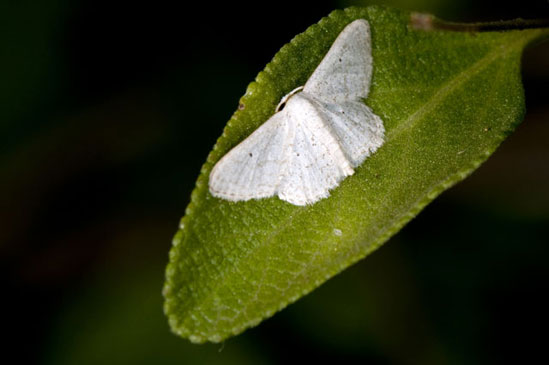
This unobtrusive geometrid is probably the soft-lined wave (Scopula inductata), although there are several similar species in this genus. It was photographed on Pinel islet during the day.
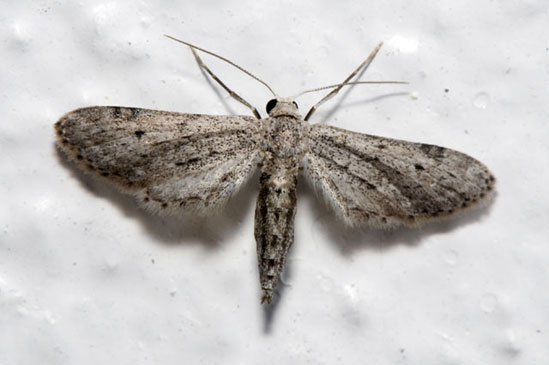
This small moth is a regular visitor and is possibly a geometrid from the genus Eumacrodes.
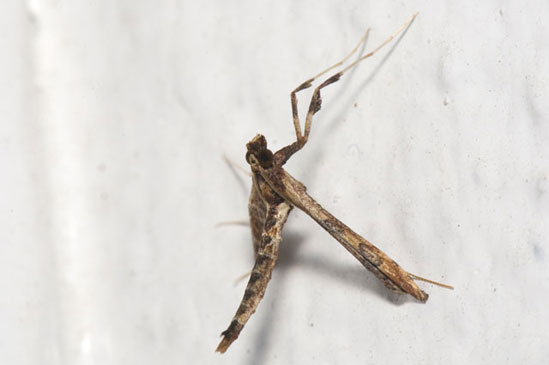
This peculiar looking moth is likely from the family Pterophoridae, the plume moths.
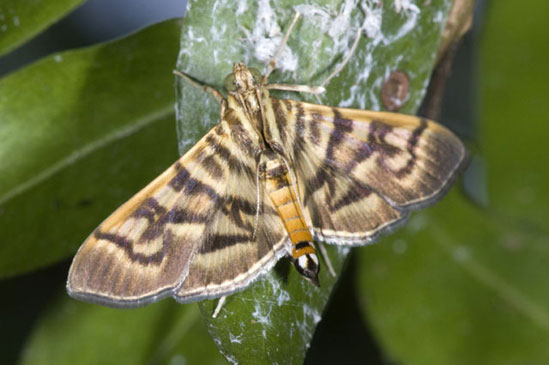
This strikingly beautiful moth is a pyralid (superfamily Pyraloidea), from the family Crambidae, possibly genus Synclera. It was seen resting during the day in a mountain forest.
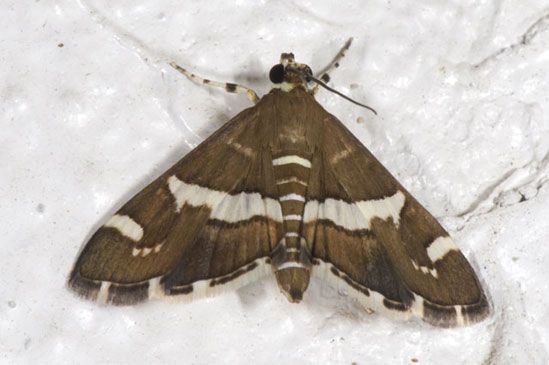
Another striking pyralid, this beet webworm (Spoladea recurvalis) was found at night. The caterpillars of this species feed on beets and other agricultural crops.

Eulepte gastralis is a pyralid found in the Caribbean, Central America and South America.
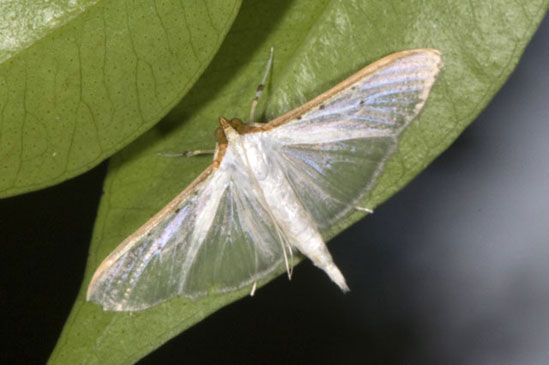
Palpita isoscelalis has translucent wings and was seen in the forest on Pic Paradis. A number of similar species from this genus are found in the Americas.
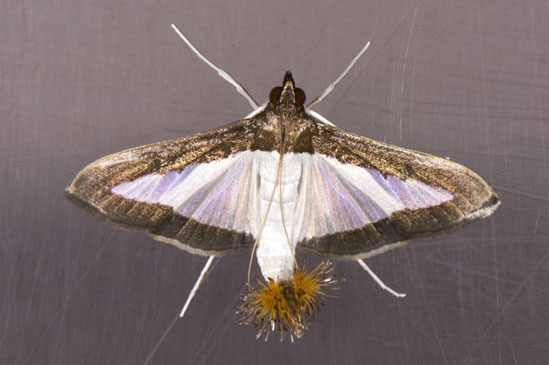
The melonworm (Diaphania hyalinata) is a rather striking pyralid that has two large hairpencils (scent brushes) at the end of its abdomen that it waves in the air while resting.
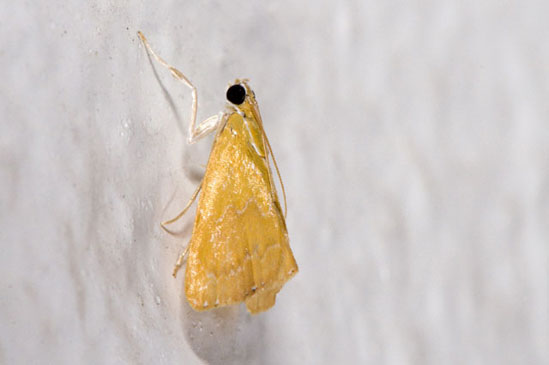
The white-roped glaphyria (Glaphyria sequistrialis) is a small, but brightly-colored moth that often visits our lights at night.
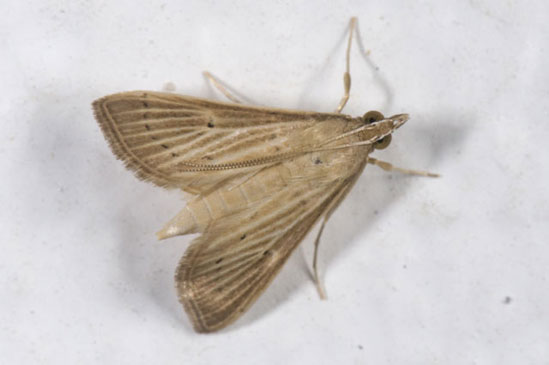
This pyralid is probably Leucania subpunctata, but analysis of the moth’s genitalia would be necessary to determine this with certainty.
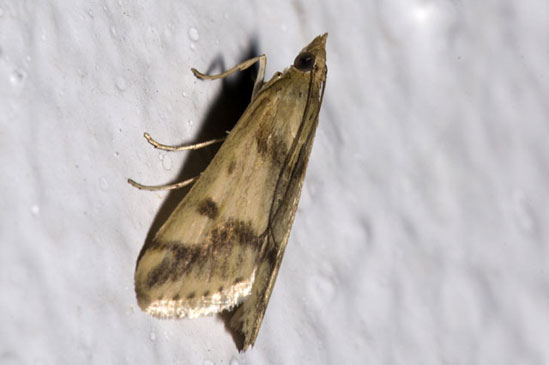
Achyra bifidalis is known to be a pest of cotton plants and is a member of the large and diverse moth superfamily Pyraloidea.
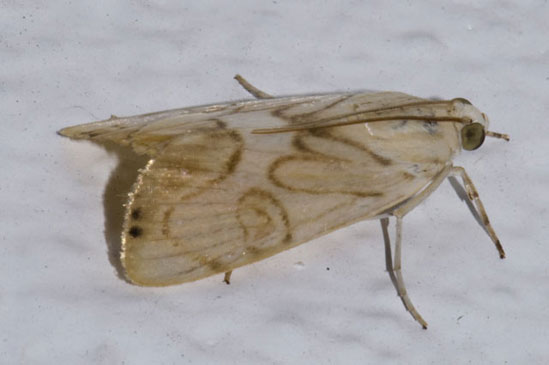
Dichogama redtenbacheri is a fairly common pyralid on St. Martin. While the shape of the markings is consistent, in some individuals they are obscured by a dark orange covering most of the wings.

This tiny and peculiar moth was found in a field in Grand Case. It is a cosmet moth (family Cosmopterigidae), possibly from the awesomely-named genus Cosmopterix.
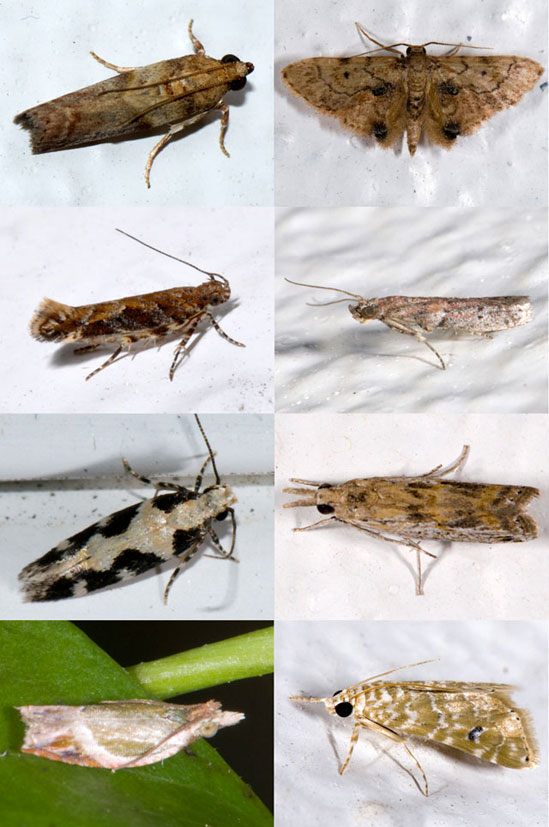
There are many types of very small moth, often pyralids, which may be found at lights. I have found them very difficult to identify, even when they have distinctive coloration. The moth on the bottom right is Hellula rogatalis.
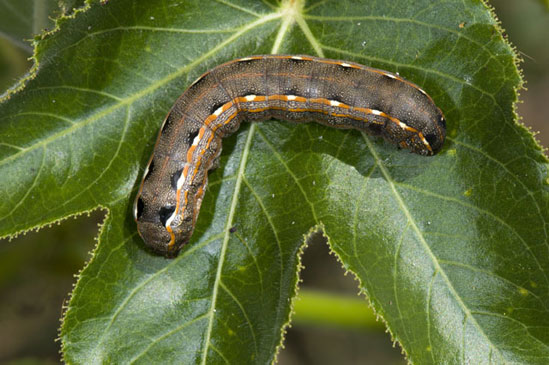
Also referred to as the garden armyworm or lateral lined armyworm, the caterpillar of Spodoptera latifascia eats a variety of plants including garden crops.
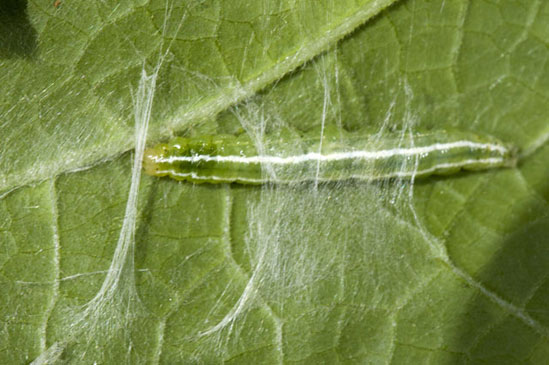
Like many caterpillars, the melonworm (Diaphania hyalinata) uses silk to fold or roll the edge of the leaf over into a shelter where it will pupate.
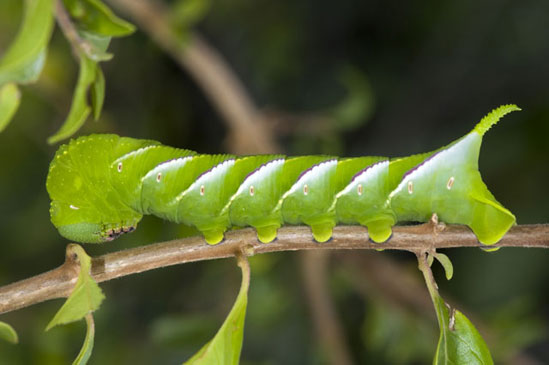
The caterpillar of the rustic sphinx (Manduca rustica) is quite large and very beautiful. It is very similar in appearance to the closely related tobacco hornworm.
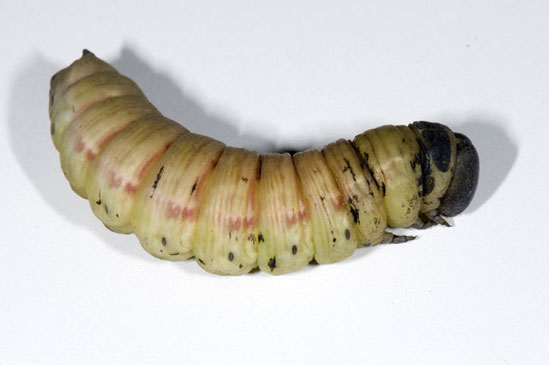
This large caterpillar, likely a sphinx moth, was writhing in the street and died shortly afterward. In retrospect, it was likely the victim of parasitism, but at the time I did not think to dissect it.
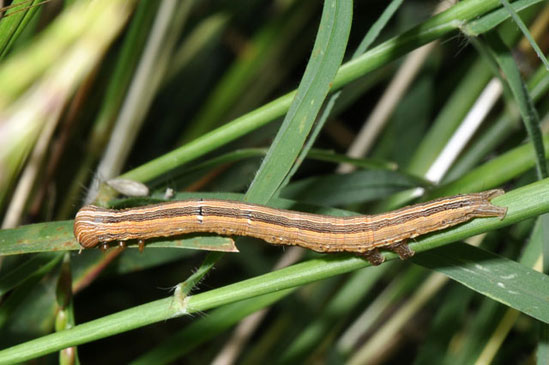
Caterpillars of geometrid moths are often referred to as inchworms due to their looping gait.
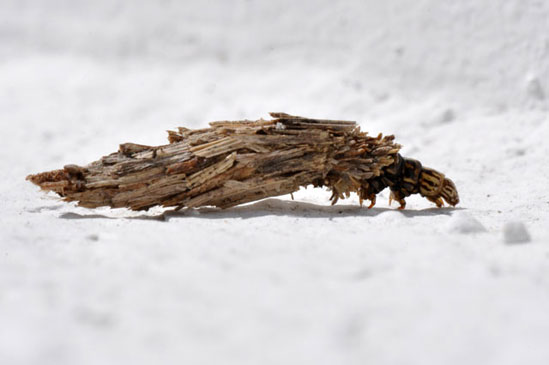
Larvae of bagworm moths (family Psychidae) create protective cases from silk and organic matter. These cases are common on building walls where they have attached to pupate.
Coleoptera
Despite the abundance of avid coleopterists, this order poses a significant taxonomical challenge due to the large number of species, often estimated at over one million, with over 400,000 currently described.
The beetles of St. Martin are quite varied and only small minority of species are included in this guide. Given the relative lack of research, it would not be surprising if there were undiscovered, possibly endemic, species on the island.
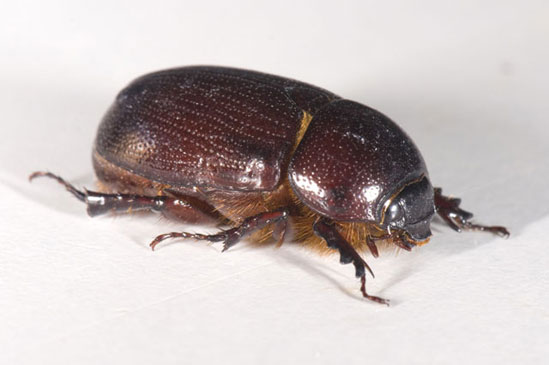
This relatively nondescript scarab is probably from either the Dynastinae subfamily or Aphodiinae subfamily. Identification in this family may require analysis of the antennae, claws and mouthparts. Like several other species, it was attracted to lights at night.
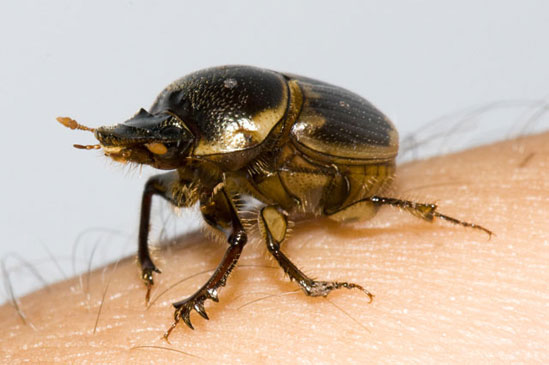
The gazelle scarab (Onthophagus gazella) is also known as the brown dung beetle. I have noticed individuals of this species that were heavily infested with tiny mites (see Other Invertebrates).
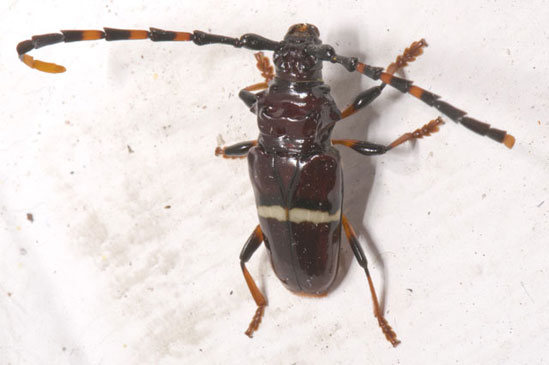
Trachyderes succinctus is a longhorn beetle from the family Cerambycidae, a large group of beetles containing over 20,000 known species.
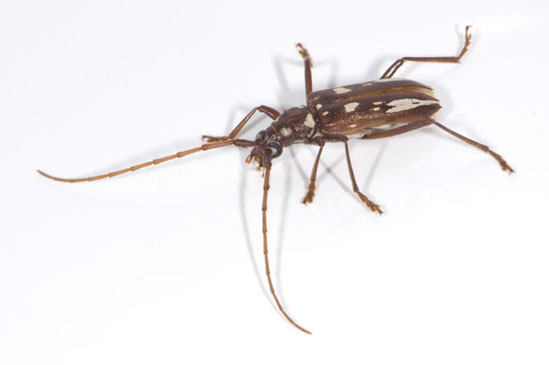
Eburia decemmaculata is perhaps the most common cerambycid on the island, and I have seen them both in the daytime and at night.
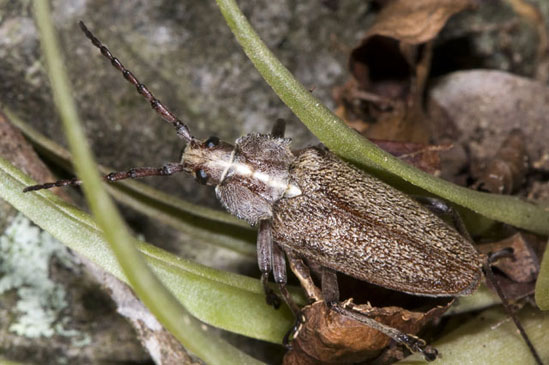
This cerambycid, seen on Pic Paradis, is probably Solenoptera chalumeaui, a species named in 1979 based on specimens from Saint Martin.
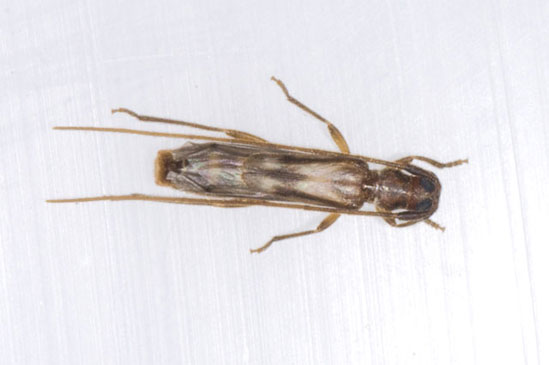
This very unusual cerambycid is probably from the tribe Necydalini in the subfamily Lepturinae. It’s elytra (wing covers) are very short compared to its body. Some members of this group imitate wasps.
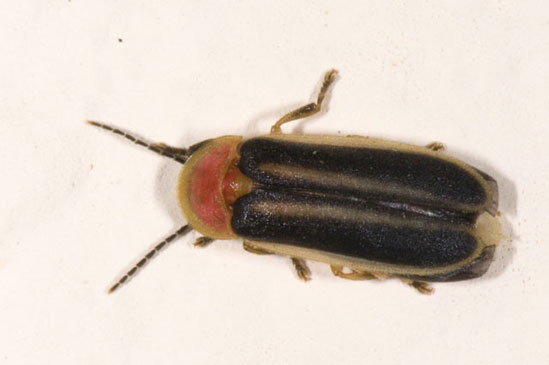
This small firefly (family Lampyridae) is probably from the genus Photuris, but a similar specimen from the Harvard Museum of Comparative Zoology online database is as yet unidentified.
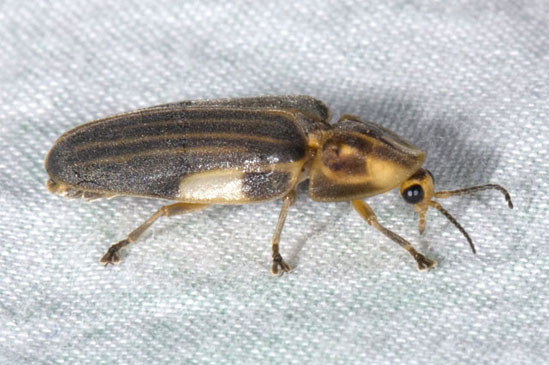
Aspisoma maculatum is a much larger species from the firefly family from the subfamily Photininae. This individual was found on a bedsheet drying near an outdoor light at night.
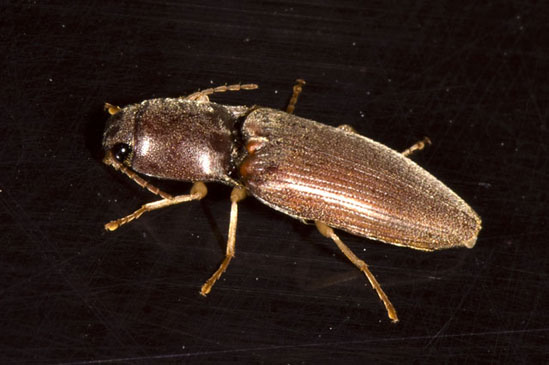
A click-beetle, family Elateridae, was attracted to an outdoor light at night. Members of this family have a spine and notch on their underside which can be used to spring them into the air.
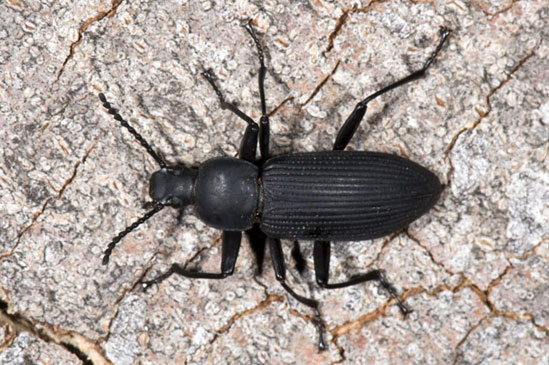
Darkling beetles, family Tenebrio, are typically found beneath logs and stones, but are sometimes attracted to lights at night. They primarily feed on fresh or decaying plant matter.

The vedalia beetle (Rodolia cardinalis) is an Austrailian species first introduced into the new world in California in 1888 as a natural pest control agent. It is a member of the ladybug family (Coccinellidae).
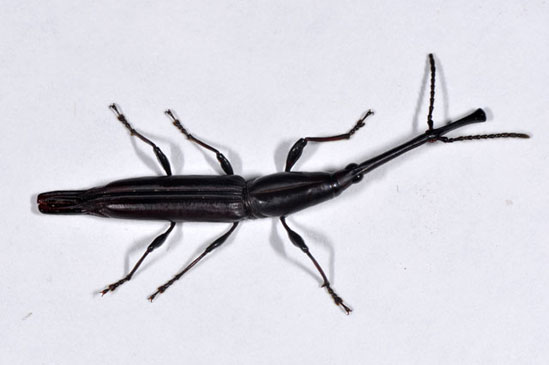
Brentid weevils, family Brentidae, are primarily tropical, highly elongated weevils. This specimen was found in the undergrowth of a montane forest.
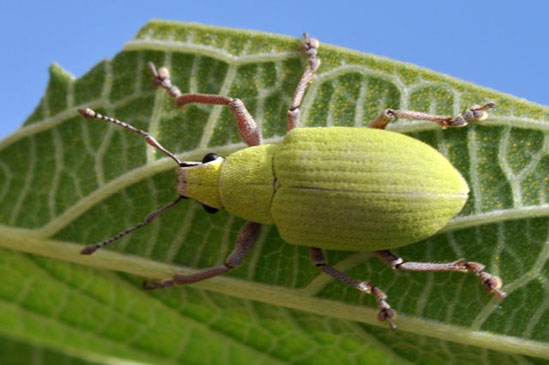
With over 60,000 species in several families, weevils (superfamily Curculionoidea) are difficult to identify. This one is from the subfamily Entiminae, the broad-nosed weevils and may be Polydrusus sp.
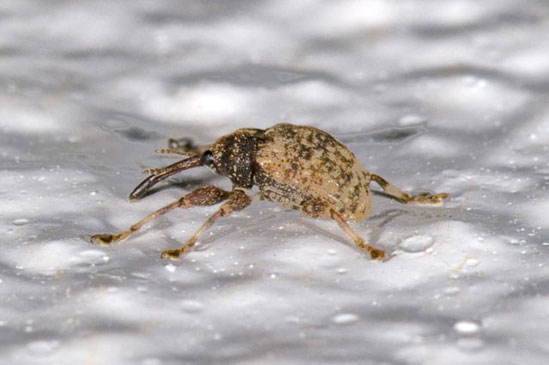
This very small weevil is from the family Curculioninae, the true weevils, and may be Anthonomus sp. Many weevils are agricultural pests, and some species on the island also infest dry goods like flour and pasta.
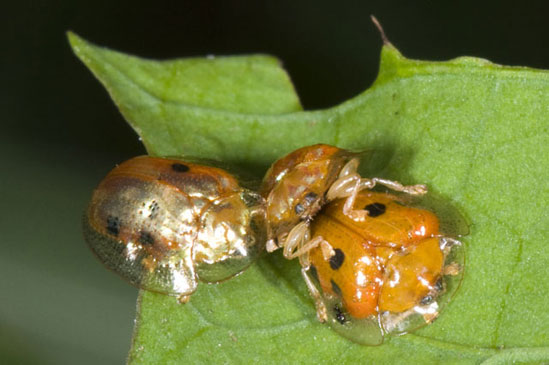
The southern golden tortoise beetle (Charidotella sexpunctata) are primarily found on plants from the morning glory family (Convolvulaceae).
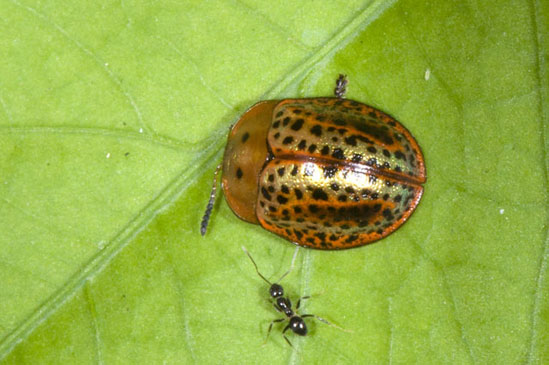
Chelymorpha cribraria is another colorful tortoise beetle. When attacked by predators such as ants, they clamp down on the leaf where they are standing and they are protected by their shield-like exoskeleton.
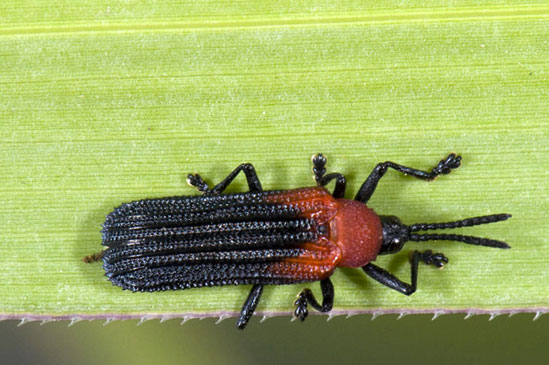
Chalepus sanguinicolis is from the same family as the tortoise beetles, Chrysomelidae.
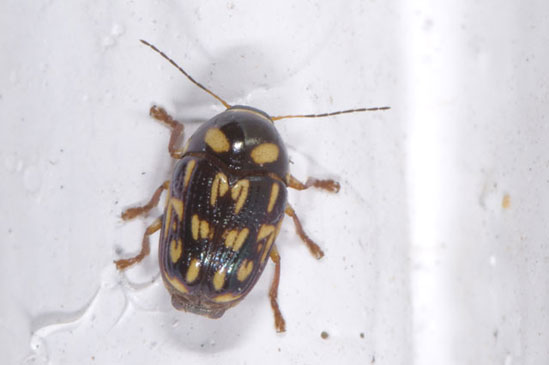
This chrysomelid is Cryptocephalus sp., possibly baleatus. The genus name refers to the fact that the head is somewhat hidden by the thorax. They are often seen near lights at night.
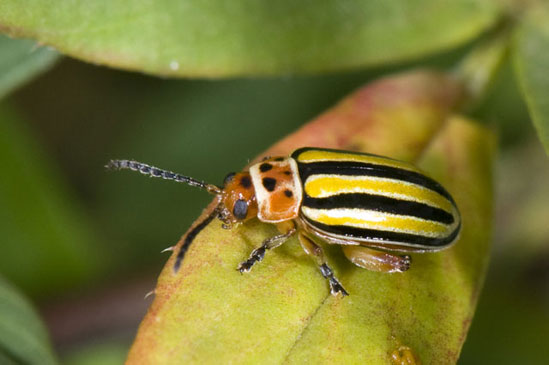
Disonycha spilotrachela is a flea beetle (tribe Alticini). They can be seen in grassy areas by day or at lights at night.
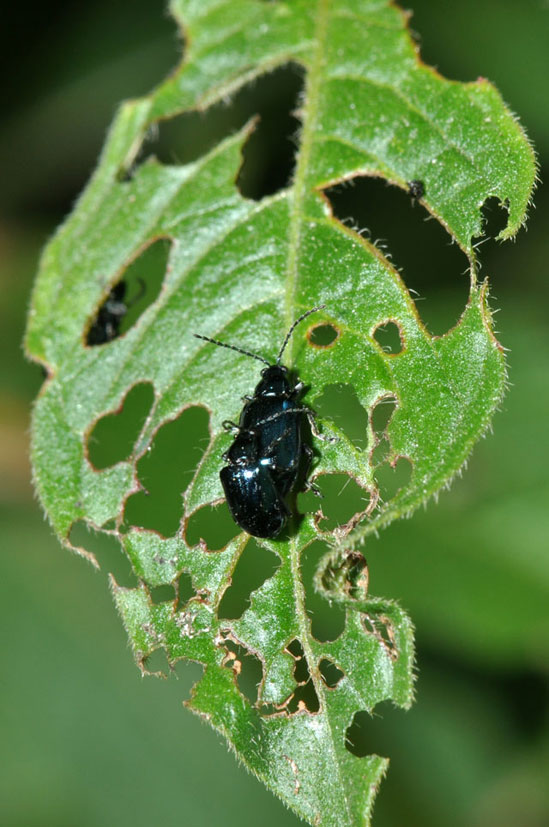
This mating pair of flea beetles may be Altica occidentalis, or perhaps one of the 300 other species in that genus.
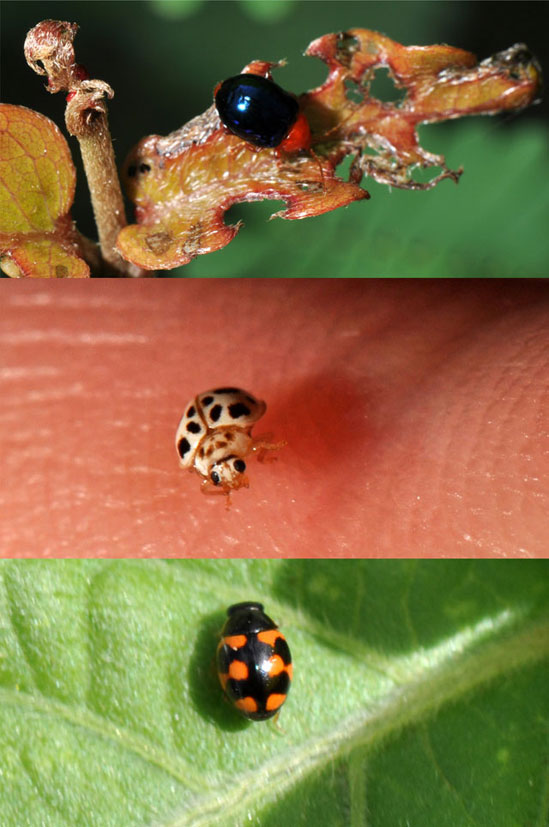
There are, of course, many other beetles from the family Chrysomelidae. Many of them are colorful, and most of them are quite small.
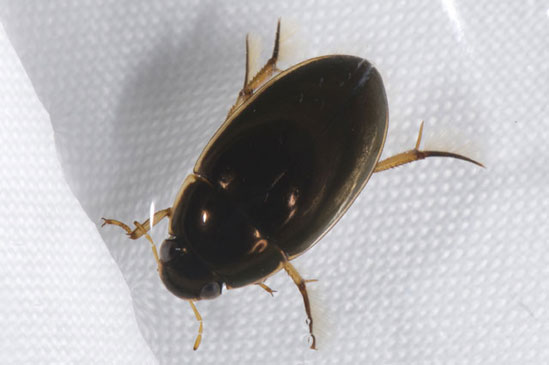
There are several species of aquatic beetle (family Dytiscidae) documented on Saint Martin. They live in freshwater habitats and are typically black or very dark brown. A small bubble of air they carry with them gives their underside a silvery appearance.
Hymenoptera
The order Hymenoptera includes ants, bees and wasps. While many species are solitary, this order includes the majority of social insects, many of which have complex colony structures and highly-differentiated castes performing distinct roles in the colony.
This group also includes some of the more dangerous insects on the island. Inadvertently stepping on a fire ant mound may bring the wrath of thousands of ants, while any overhang or branch may be a paper wasp nest and will be defended if one is to accidentally get too close.
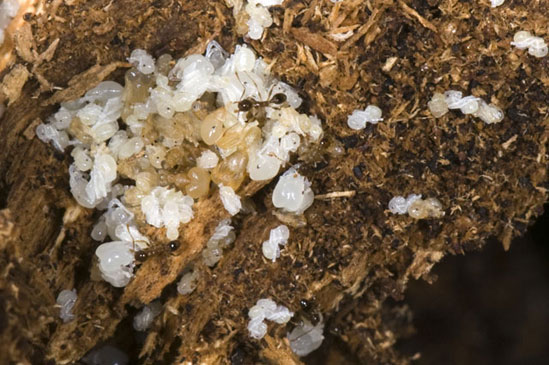
The inside of an ant colony reveals pupae of multiple sizes. In some species, there are multiple castes of workers perform specialized tasks. The larger pupae may also be males and females who fly off to form new colonies.
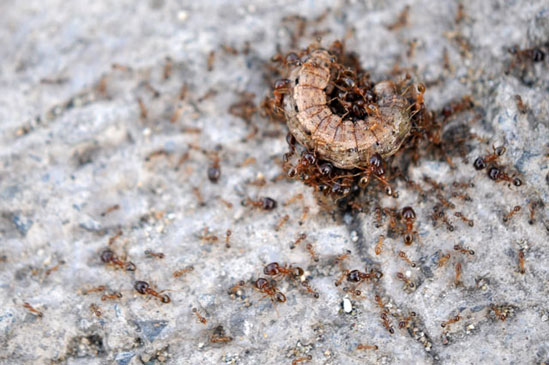
While many ants are scavengers, in this case a group of ants are attacking a live caterpillar.
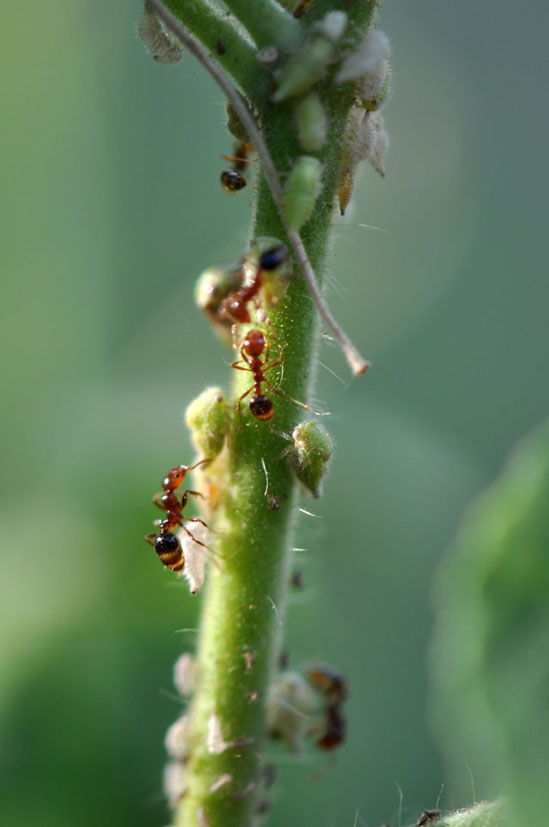
This group of ants is tending leafhopper nymphs in exchange for sweet nectar they excrete. I have also seen ants on the island tending aphids and scale insects.
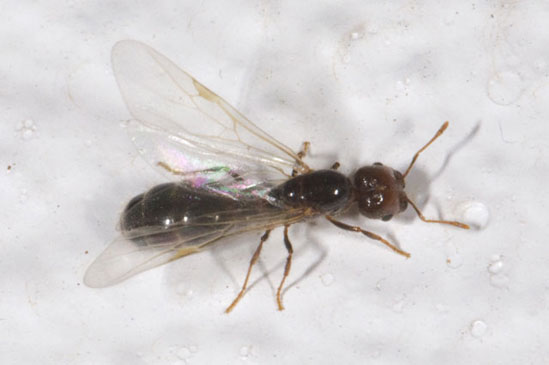
Winged male and female ants occasionally swarm at dusk, sometimes in astounding numbers. After mating, the males die and the females become the queen of a new colony.
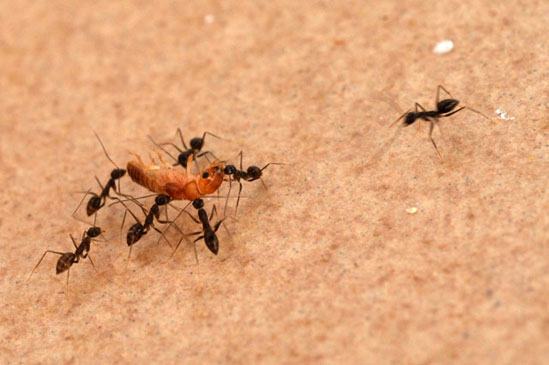
Ants are exceedingly common and sometimes a pest, but they also offer the valuable service of carting away organic debris, in this case a dead termite.
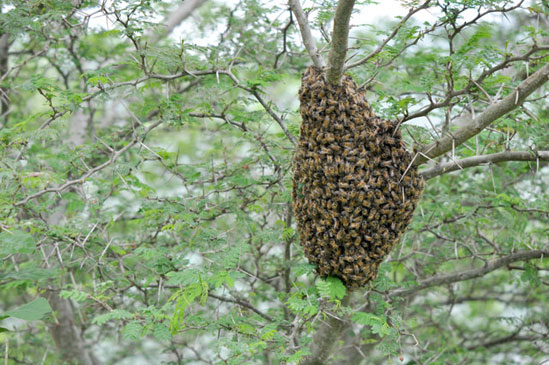
This swarm of honeybees (Apis sp.) has probably recently split from a hive with the old queen following the birth of new queens and has not yet found a suitable location for a new hive.
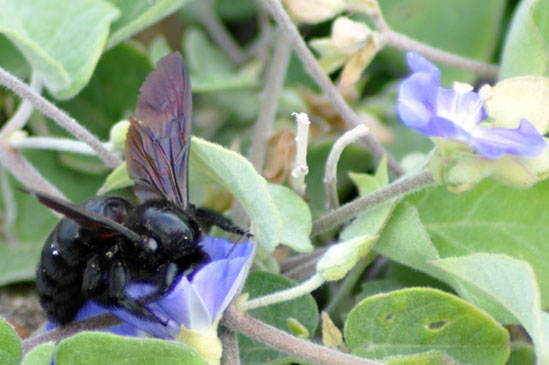
Large, black carpenter bees (Xylocopa sp.) are commonly seen feeding at beach morning glory and other flowers.
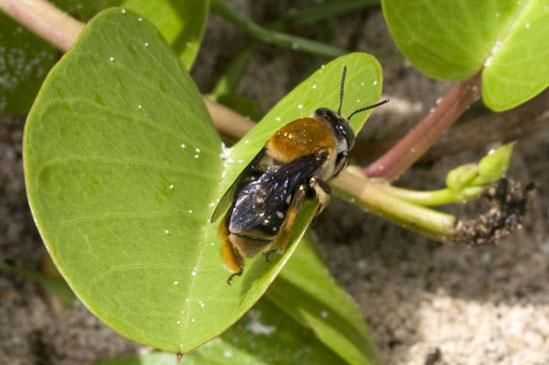
This large bee, probably also Xylocopa sp., I have seen swarming near the beach frequently. While they don’t seem to feed, pairs or small groups seem to fight, although perhaps they are courting.
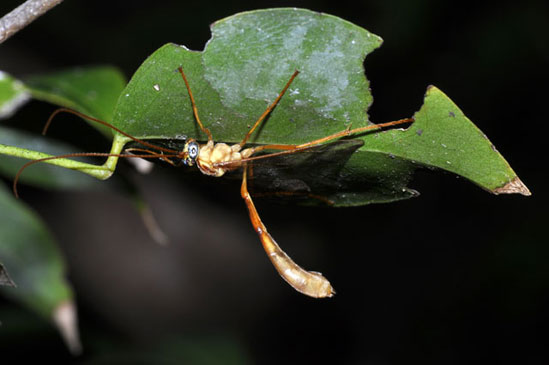
Over a dozen of these ichneumon wasps (Ophion sp.) were seen hanging from a tree in the forest, possibly because they had all recently hatched from the same host insect.
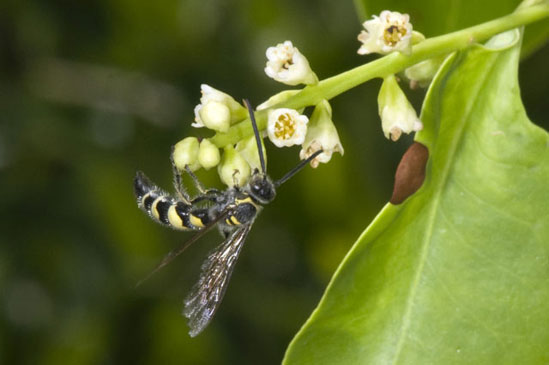
This scoliid wasp, probably Campsomeris trifasciata feeds on pollen, although some members of the family Scoliidae feed on beetle larvae.
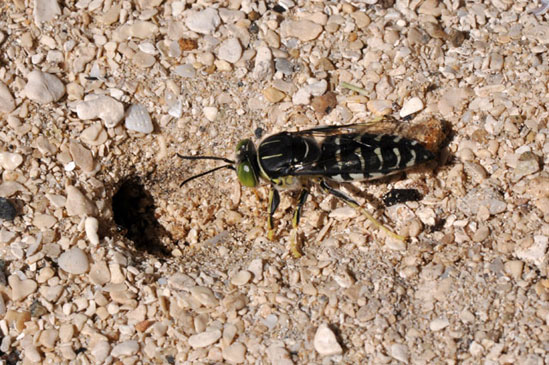
This sand wasp (Stictia signata) is seen emerging from the underground chamber where its larvae grow, feeding on insect prey that has been left for them.
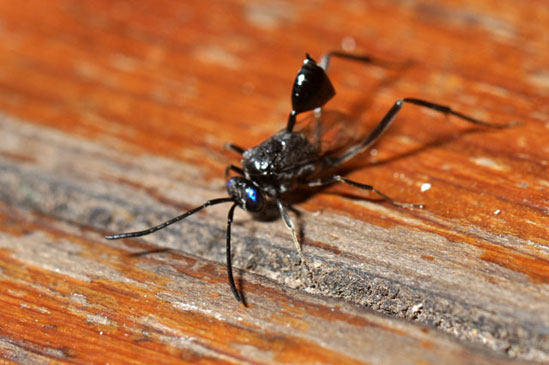
The ensign wasp (Evania appendigaster) is a parasitic wasp. Eggs are laid in the oothecae (egg cases) of cockroaches, where the larvae develop. When walking, this wasp tends to bob its abdomen up and down.
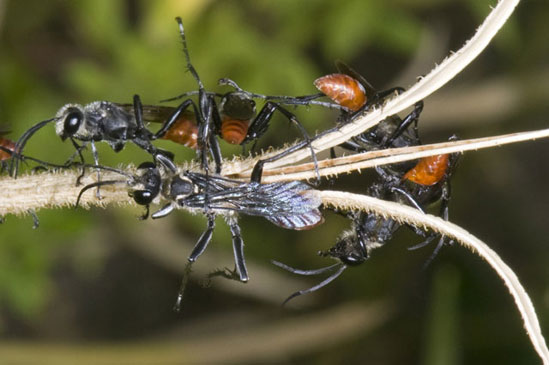
A group of spider wasps (probably Prionyx thomae) may have been newly hatched from their host as this is typically a solitary species.
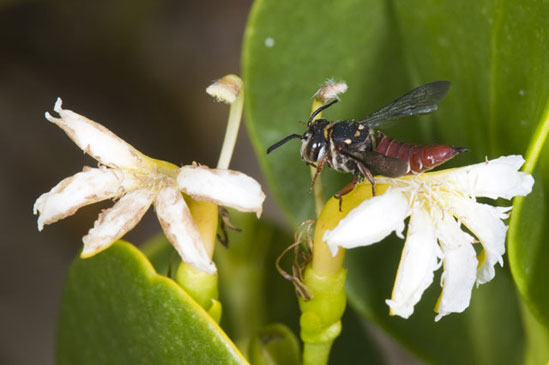
This small wasp with an unusual tapered abdomen was found feeding from flowers near the beach.
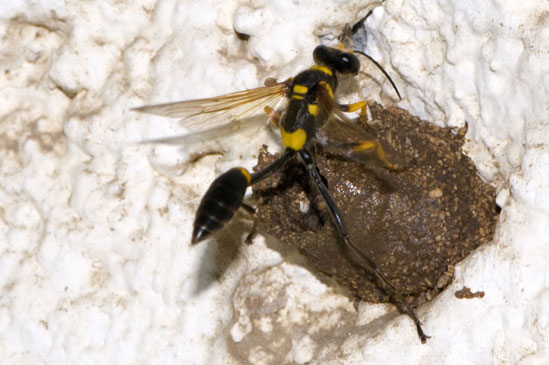
Mud daubers (Sceliphron caementarium) construct mud nests during the rainy season, often on the sides of abandoned buildings.
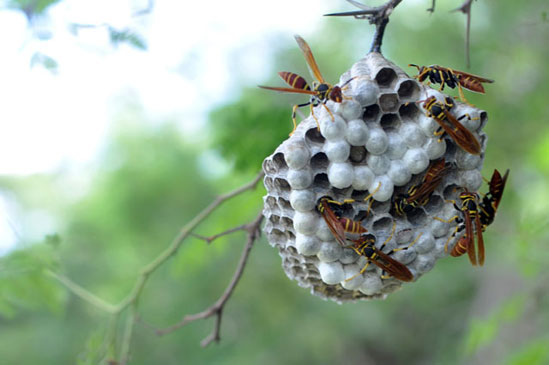
The jack Spaniard (Mischocyttarus mexicanus cubicola) is an exceedingly common wasp which builds paper nests on trees, on buildings and in rock caves.
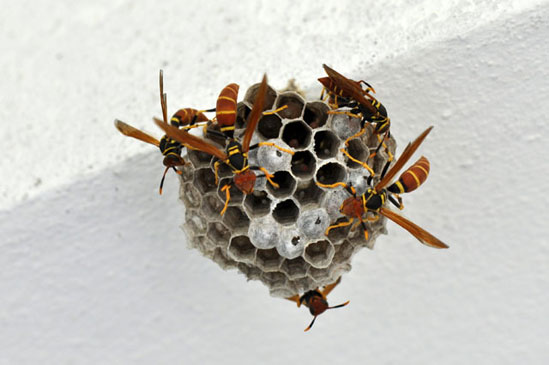
A closer look at a jack Spaniard nest reveals the larvae inside.. They commonly on buildings and other man made structures and readily defend their nests. Their sting is painful, but subsides quickly.
Neuroptera
The lace-winged insects are named for the visible veins in their transparent wings. Although they look very different, their closest living relatives are the beetles. This order is primarily predatory, usually feeding on small insects, and has distinct larval, pupal and adult stages. They are easily attracted to lights at night, probably due to the presence of small insects that they can feed upon.
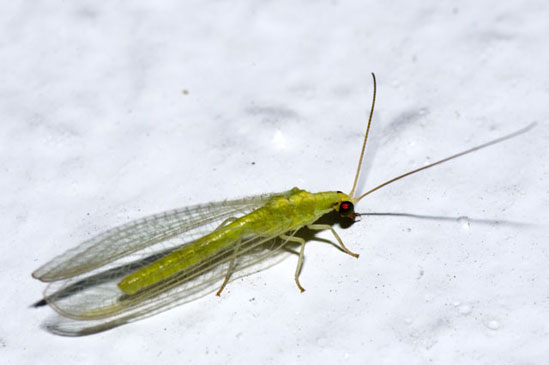
Green lacewings, family Chrysopidae, feed on small insects such as aphids, and are frequently used as pest control agents. Their tiny eggs are laid on delicate stalks on the underside of leaves.
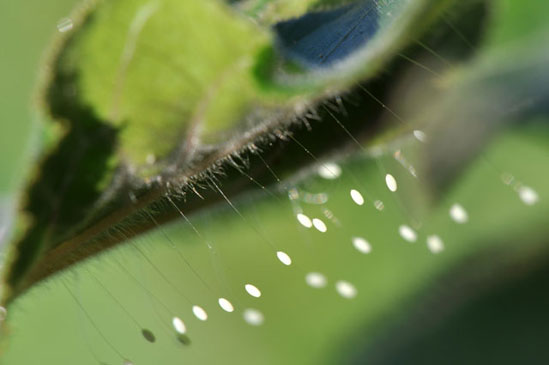
Lacewings lay their eggs on slender stalks, usually on the underside of leaves. Their larvae, like the adults, feed primarily on aphids.
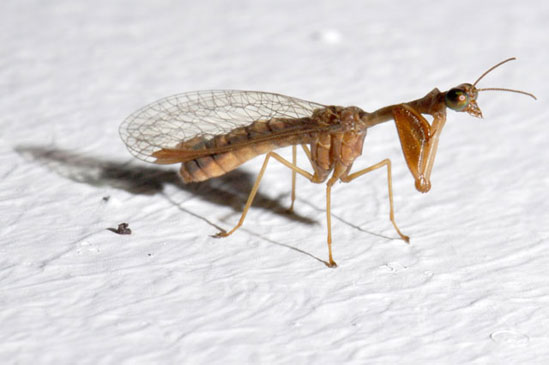
Unrelated to the praying mantis, the mantisfly (Hispinae sp.) is an example of convergent evolution, a process by which unrelated organisms develop a similar biological trait.
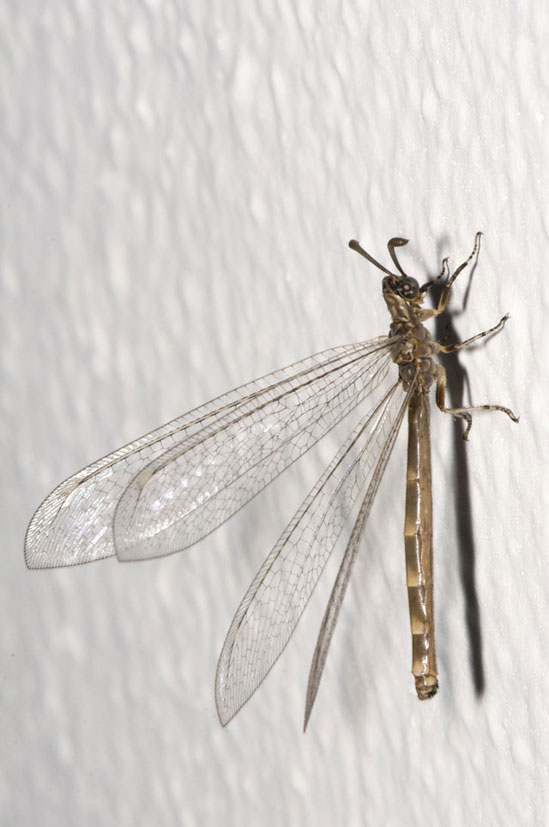
Antlions, from the family Myrmeleontidae have clubbed antennae and superficially resemble dragonflies.
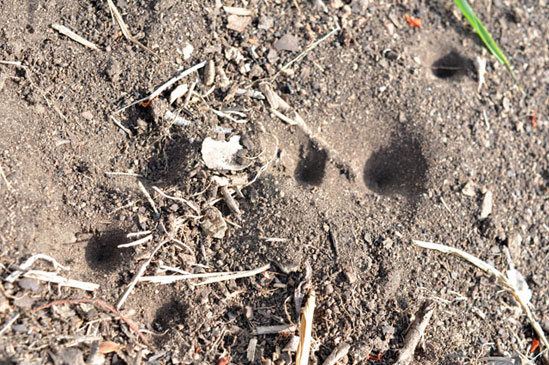
Cone-shaped traps in sand or loose dirt are made by antlion larvae who wait at the bottom for small insects to fall into them. They are easily seen all over the island.
Diptera
This order includes many of the most annoying insects on the island, including flies, mosquitoes and gnats. On St. Martin mosquitoes, specifically Aedes aegypti, represent a significant health hazard, transmitting dengue fever, an often severe tropical disease.
Dipterans use one pair of wings to propel themselves in flight, while the other pair has been modified into tiny, knobbed structures known as halteres which function as accelerometers to increase stability in flight. This adaptation gives flies in particular the ability to perform amazing aerial acrobatics.
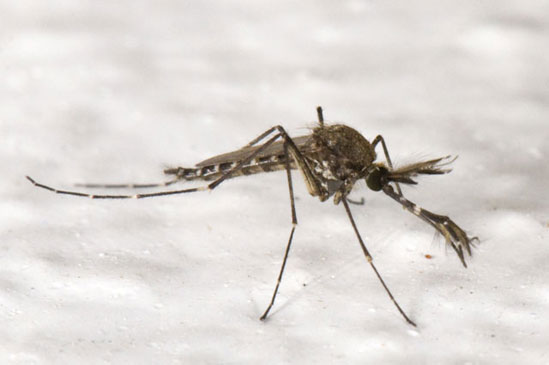
The white stripes on the legs of this mosquito may indicate that it is the dengue-carrying Aedes aegypti.
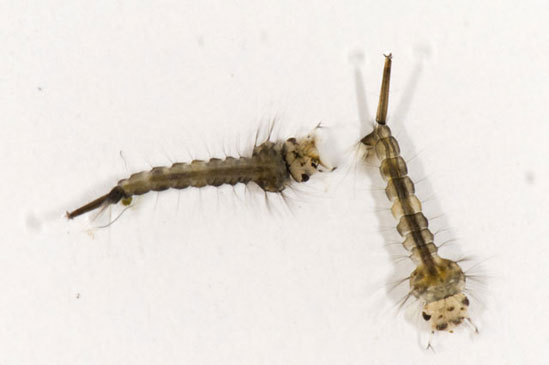
Mosquito larvae are aquatic and can be found in almost any open source of fresh water. In this photo they are significantly magnified, thank goodness.
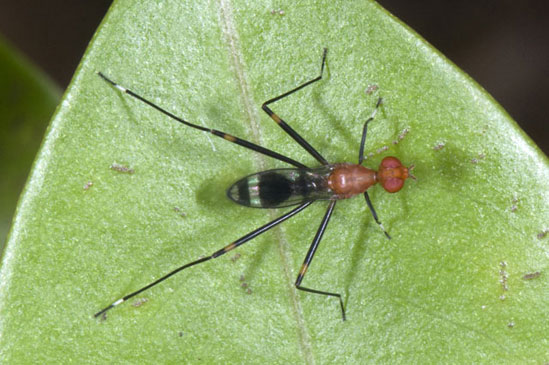
I was quite perplexed by this unusual fly, Taeniaptera lasciva. It is a member of the Micropezidae, a family with unusually long legs. Many species in this family mimic ants or wasps.
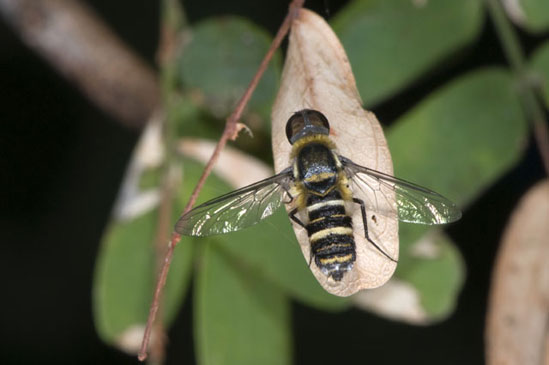
This elongated syrphid fly (probably Xylota sp.), like many in this family, has evolved to resemble bees and wasps.
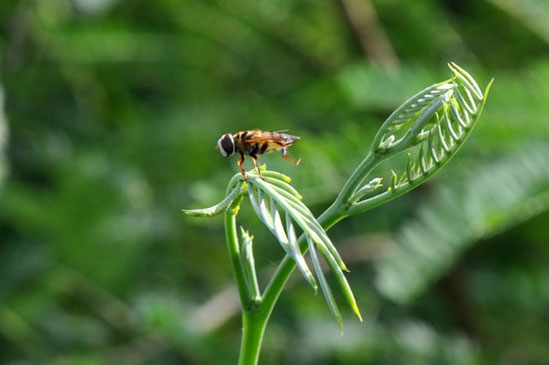
The syrphid fly, also known as the flower fly or hoverfly, feed primarily on pollen and nectar and often resemble bees. This specimen is probably Palpada vinetorum.
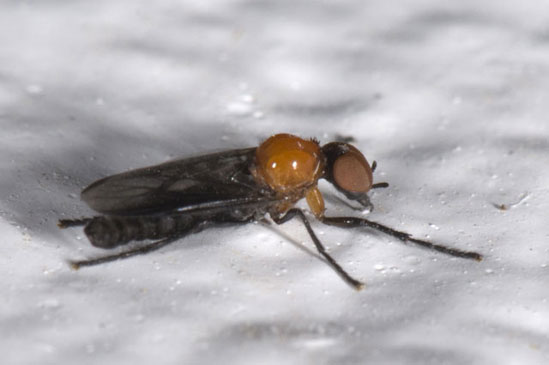
This odd looking fly is a dance fly (family Hybotidae). Some members of this family crawl in distinctive patterns when hunting for food, which gave rise to their common name.
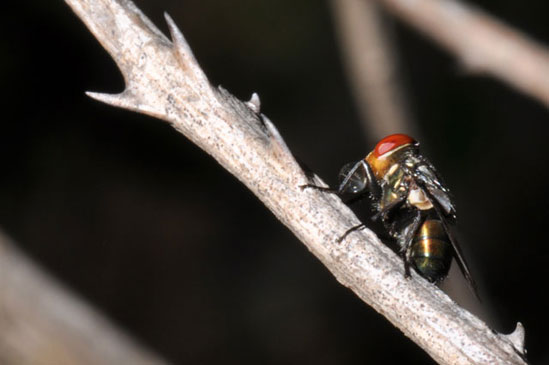
This blowfly (family Calliphoridae, possibly Chrysomya megacephala) is drinking a droplet of water from a small tree branch.
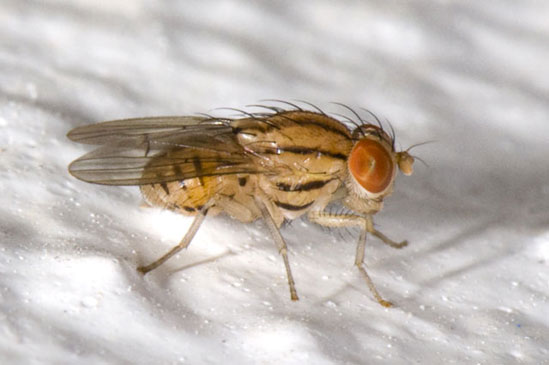
This small Lauxaniid is probably Poecilominettia sp., possibly valida. I normally see them at night, which his unusual for a fly.
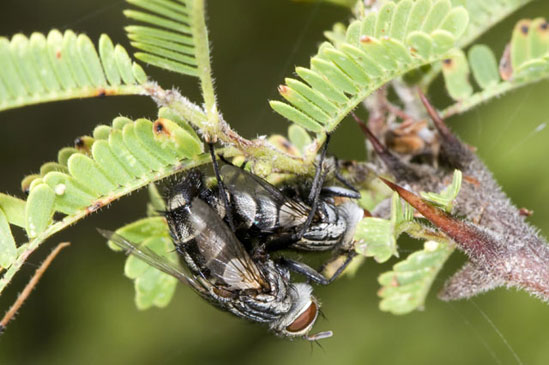
These large gray and black flesh flies (family Sarcophagidae) are making sweet love on the underside of a branch. The larvae typically live in carrion.
Hemiptera
Members of this order is often referred to as true bugs, and it also includes aphids, cicadas, planthoppers and leafhoppers. Their defining characteristic is the straw-like proboscis that they use to pierce and suck liquid from their food source, which is typically plants. They have an incomplete metamorphosis, growing from egg to nymph to adult without pupating. The nymph stage tends to somewhat resemble the adult.
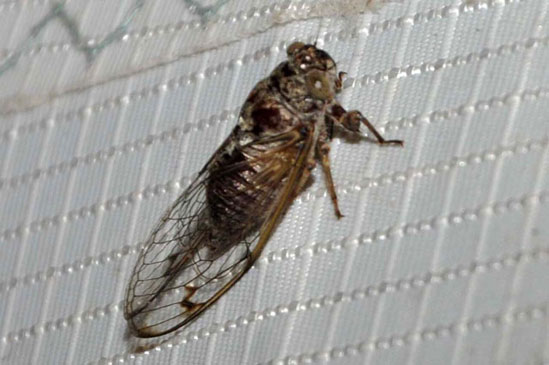
This cicada, possibly Proarna sp., is more often seen than heard. Cicadas are from the superfamily Cicadoidea and live underground as nymphs, often for several years, before emerging as adults. (Photo M.A.)
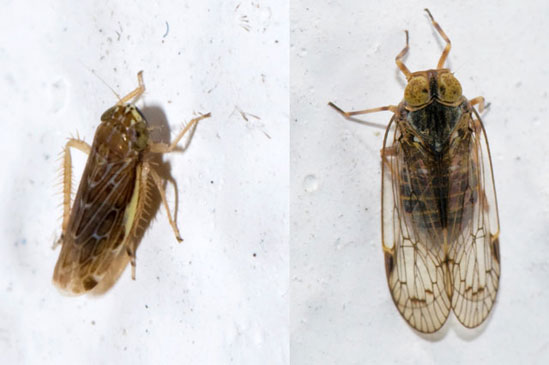
Leafhoppers (family Cicadellidae) are a diverse group including over 20,000 species. They are generally quite small and often resemble cidadas, to which they are closely related.
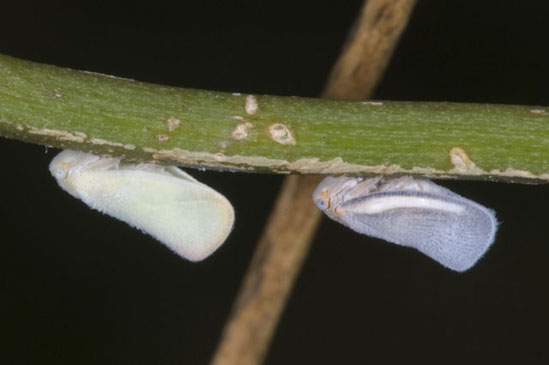
These planthoppers (Ormenaria rufifascia) are also related to cicadas and leafhoppers. They feed on the sap of various plants, including palm trees.
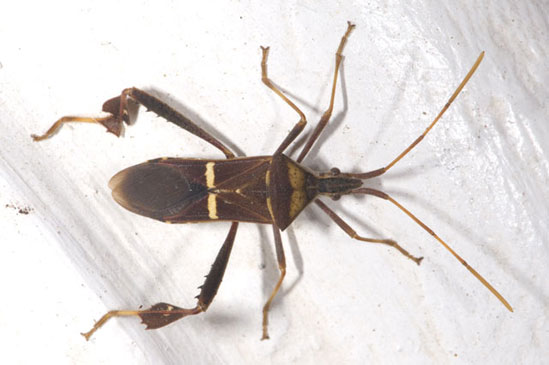
Leptoglossus balteatus is a leaf-footed bug (family Coreidae). They are named after the leaf-like portion of its rear legs. When approached, they give off a very strong, but not unpleasant odor.
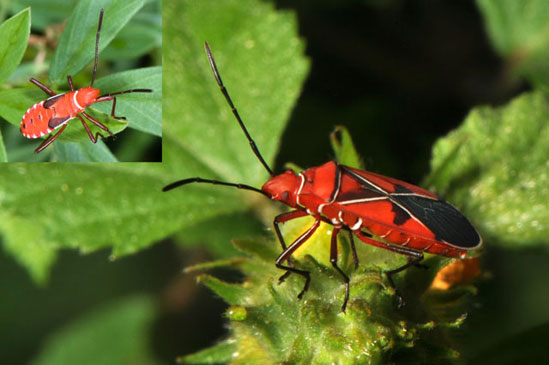
The St. Andrew’s cotton stainer (Dysdercus andreae) is a brightly-colored, quite common resident of the island and is found throughout the West Indies either on living plants or decaying leaves. Inset, top left: the nymph (immature) of this species.
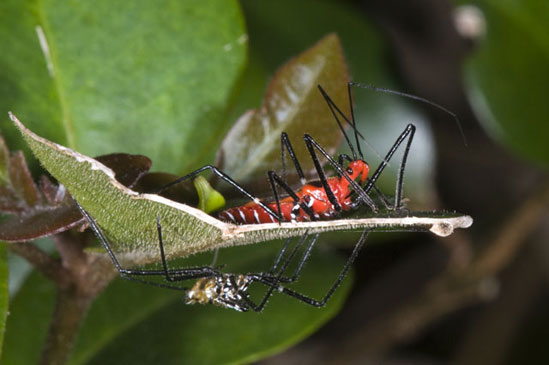
The milkweed assassin bug (Zelus longipes) has similar coloration to the cotton-stainer, but very different habits. Assassin bugs (Reduviidae) are predatory, injecting their prey with saliva that liquefies their tissues, which are then sucked out.
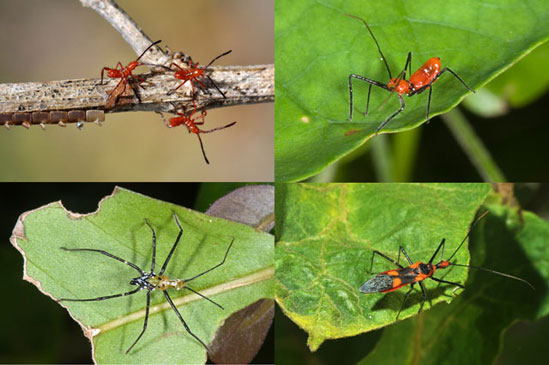
The life cycle of the milkweed assassin bug. Clockwise from top left: newly hatched nymphs emerging from a line of eggs on the bottom of the branch, an older nymph, the empty exoskeleton of a larger nymph, the adult.
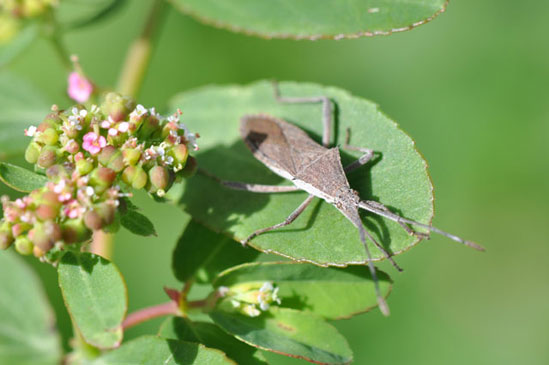
An alydid, possibly Megalotomus sp., probably one of a number of species from the family Alydidae on the island.
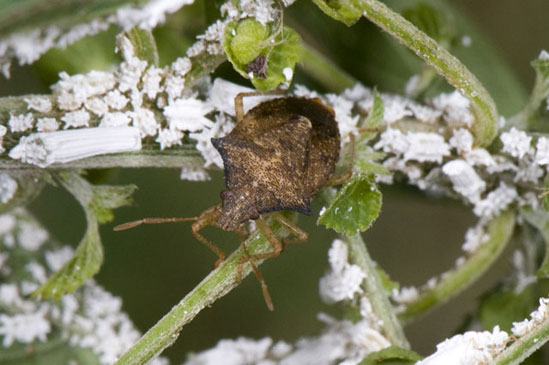
The Pentatomidae are often shield-shaped and include stinkbugs, although many other species of hemipteran produce strong odors as a defense mechanism.
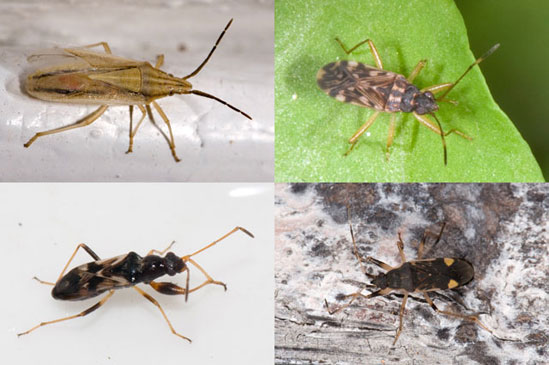
A porch light left on at night invariably attracts a variety of small hemipterans.
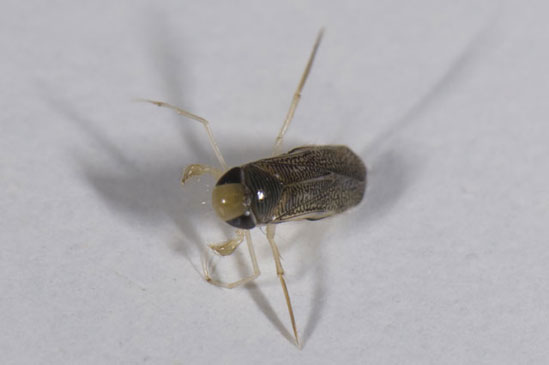
There are a number of aquatic hemipterans, such as this water boatman, which is either Trichocorixa reticulata or T. verticalis. This individual was photographed during a swarm when hundreds landed on our balcony at night.
Orthoptera
This order of insects includes most of the noisemaking arthropods on the island, with many species that chirp or sing to attract mates. The order is quite varied on the island and includes diurnal and nocturnal species that inhabit pretty much every type of habitat on the island from the coasts to the highest peaks.
While most grasshoppers are active during the day, many crickets and katydids are more active at night and spend their days hiding under rocks and logs or in the undergrowth.
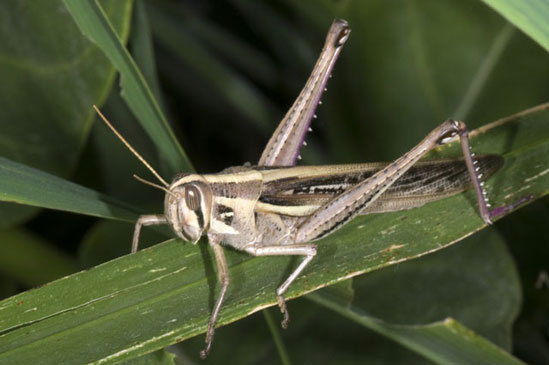
A locust (Schistocerca sp., possibly pallens) is quite common on the island, found in most grassy and shrub areas. This genus is found in many parts of the world and is famous for swarming.
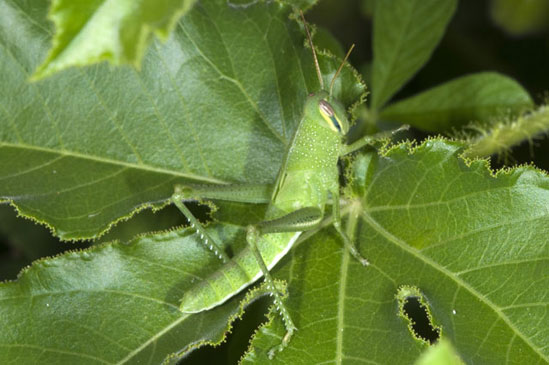
A nymph (juvenile) locust (Schistocerca sp.) looks very different from the adult, but does share many of the same facial features. Locust is a term for grasshoppers that have a tendency to swarm when conditions are right.
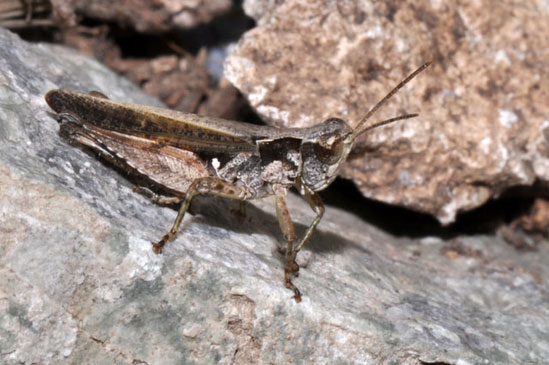
This true grasshopper from the family Acrididae is much smaller than the Schistocera that are also found on the island.
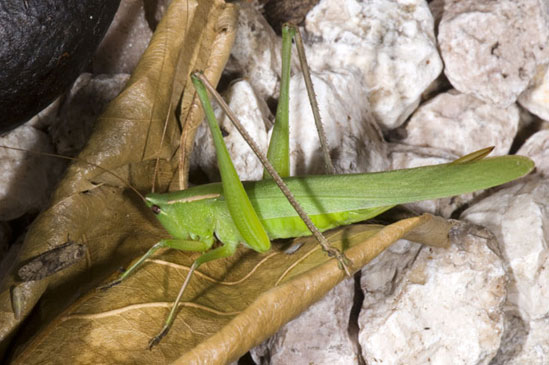
Alternately referred to as a conocephaline katydid or coneheaded grasshopper (Neoconocephalus sp., possibly triops), this species is seasonally quite common at lights at night. I have also seen a brown version, either a similar species or a color variant.
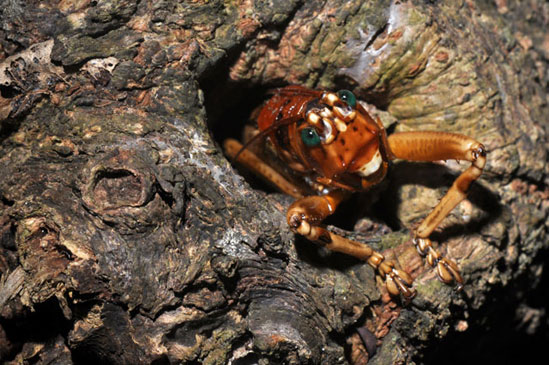
This peculiar katydid (Nesonotus sp.) was found near the top of Pic Paradis.
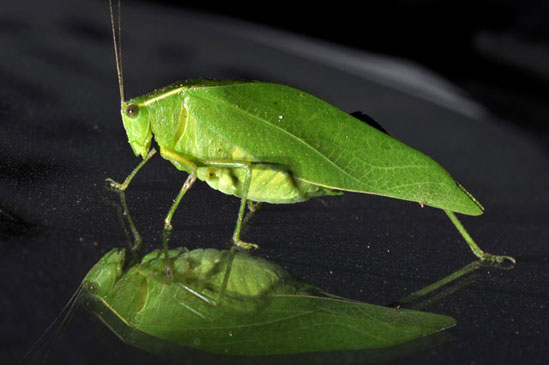
The katydid family (Tettigoniidae) is quite diverse in the Caribbean, including many species that imitate leaves as a form of camouflage.

A juvenile katydid, possibly Phoebolampta caeruleotergum, a species discovered on St. Martin in 2008.
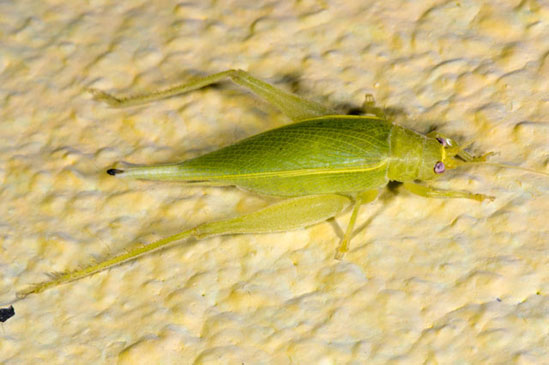
My best guess is that this is a winged bush cricket (family Trigonidiinae), possibly Cyrtoxipha sp. It was seen on the side of a building at night.
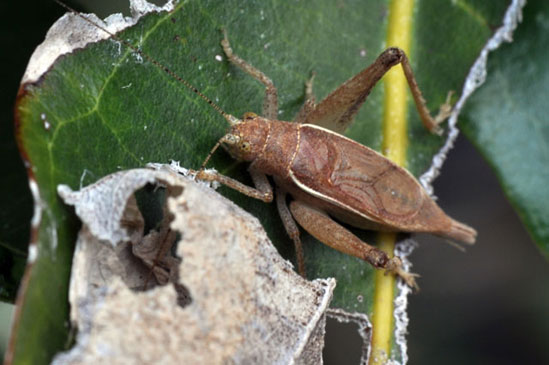
This arboreal cricket (possibly subfamily Eneopterinae) was found in a tree in the Bell Point area.
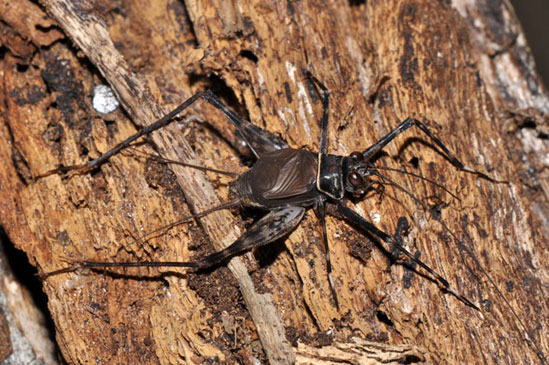
Cave crickets (Amphiacusta spp.) may also be found under rocks and in leaf litter.
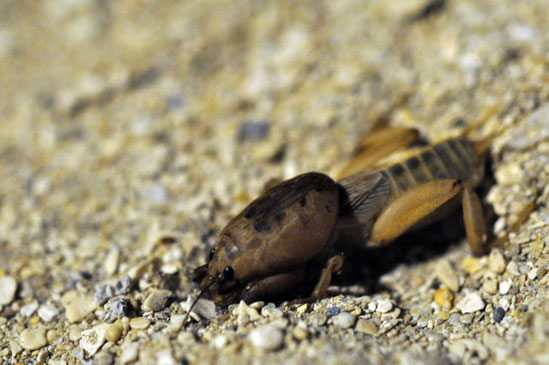
The mole cricket (family Gryllotalpidae), is a rarely-seen nocturnal cricket that spends its days in often extensive underground tunnel systems.
Odonata
This order includes dragonflies and their daintier cousins the damselflies. These insects are the last remaining members of a lineage that extends back over 300 million years. These adept fliers begin their life as predatory aquatic larvae that are able to live in brackish waters, which may help them prosper on St. Martin where there is a relative lack of freshwater bodies.
Aside from their relative size, an easy way to distinguish between dragonflies (Anisoptera) and damselflies (Zygoptera) is that dragonflies keep their wings spread when at rest, while damselflies fold them above their backs.
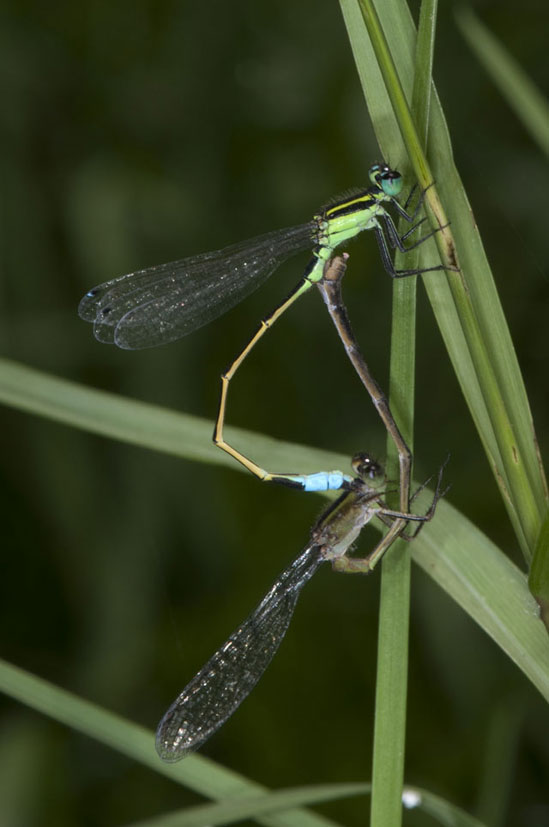
Rambur’s forktail (Ischnura ramburii) is the most common species of damselfly in the Americas. The male can be identified by the completely blue segment near the end of the abdomen.
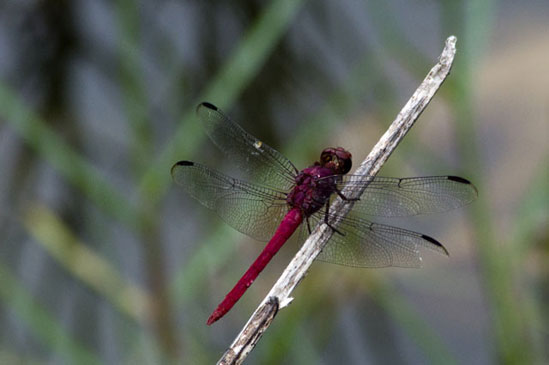
Red dragonfly, possibly Brachymesia sp. seen near a roadside ditch that is seasonally filled with fresh water.
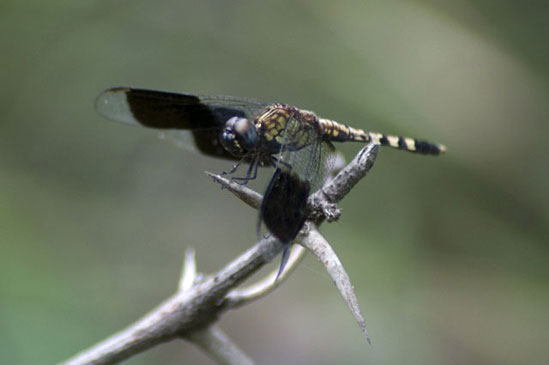
Several species of dragonfly have banded wings like this specimen, possibly the band-winged dragonlet (Erytrhodiplax umbrata). This species exhibits sexual dimorphism, and females do not have dark bands on their wings.
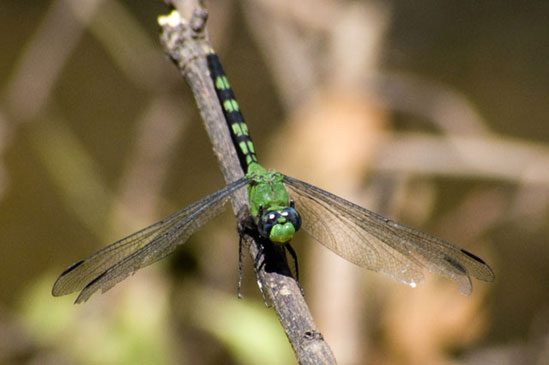
The great pondhawk (Erythemis vesiculosa) is large and brilliantly green. It is a widespread species from North America to South America.
Other Insects
Several orders of insect are represented on the island by either fewer or less conspicuous varieties. Among those collected here are the silverfish (Thysanura), cockroaches (Blattaria), walking stick (Phasmatodea), earwig (Dermaptera) and termites (Isoptera).
It is also likely that praying mantises (Mantodea) are present on the island, although I have yet to see them myself.
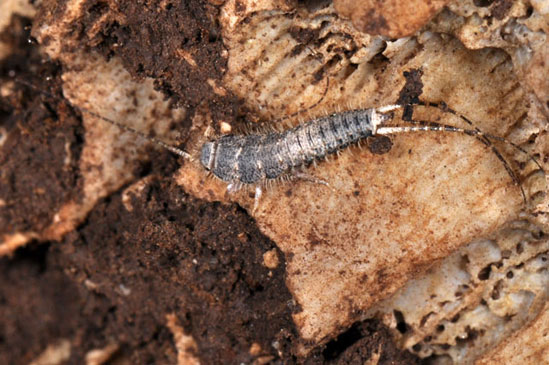
Silverfish are primitive insects typically found in rotting leaves and other detritus on the forest floor.
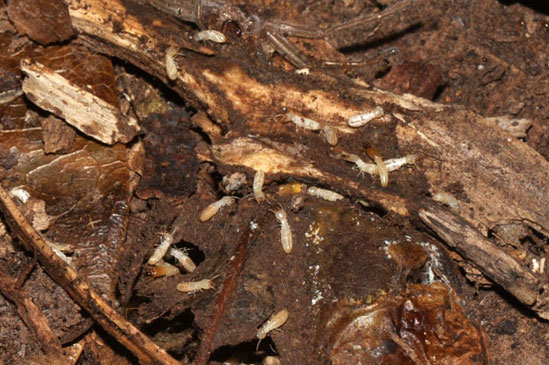
Termite colonies may be found in rotting logs. Winged termites sent out to create new colonies are also attracted to lights at night. Similarities between termites and some cockroaches have prompted some scientists to group them together.
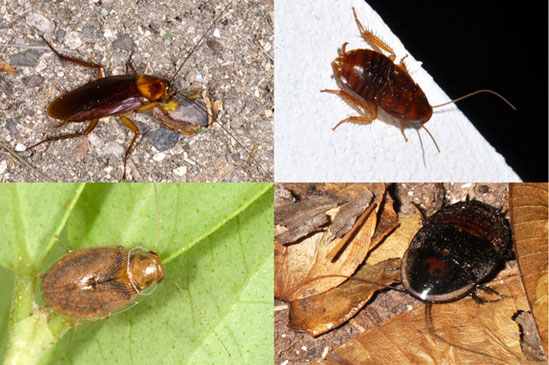
Cockroaches, clockwise from top left: American cockroach (Periplaneta americana) adult (locally called the mahogany bird), American cockroach nymph, flightless cockroach (probably Hemiblabera sp.), small arboreal cockroach (family Blattellidae).
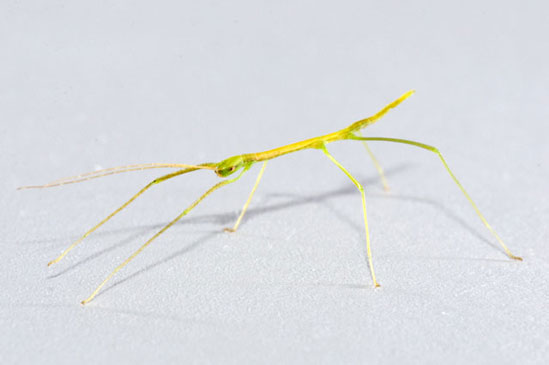
This walking stick is probably Bacteria sp. and given its small size is most likely a nymph. It was found at night in Grand Case and waves its body back and forth to look like it is swaying in the wind.
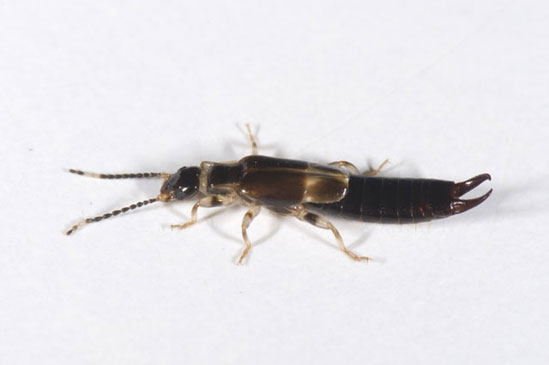
Earwigs (order Dermaptera) are nocturnal insects that feed on both plants and small insects. This one flew onto our table while dining outdoors. Its large hindwings are folded beneath the short, leathery forewings which serve as wing covers.
